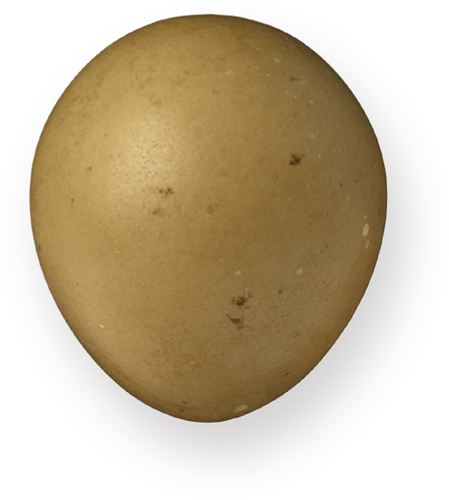CHARADRIIFORMES

ADULT BIRD SIZE
6–7 in (15–18 cm)
INCUBATION
21–22 days
CLUTCH SIZE
4 eggs
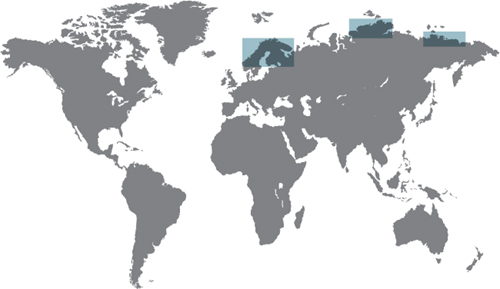
|
ORDER |
Charadriiformes |
|
FAMILY |
Scolopacidae |
|
BREEDING RANGE |
Northern Europe and Asia, Aleutian Islands |
|
BREEDING HABITAT |
Boreal wetlands, taiga bogs |
|
NEST TYPE AND PLACEMENT |
A scrape on the ground, lined with grasses |
|
CONSERVATION STATUS |
Least concern |
|
COLLECTION NO. |
FMNH 15338 |
This sandpiper is the sole member of its genus. It resembles in appearance a typical small sandpiper such as the Dunlin (see here), but its genetic make-up points toward affinities with the larger ruffs. It is also different from other shorebirds in that this species is less gregarious on the breeding grounds, and even during migration, and occurs in relatively small flocks of around ten individuals.
At the onset of the breeding season, the male performs a conspicuous courtship flight to impress the female, circling the bog or other wetland repeatedly. Once the pair bond forms, the female and the male attend the eggs and the chicks together, taking turns in incubation and guarding. Eventually, the female leaves the family behind and the male attends to the young until they become independent.
The egg of the Broad-billed Sandpiper is gray to brown in background color, with large dark speckles, and 13∕16 x ⅞ in (30 x 22 mm) in size. The nest may be hidden underneath tufts of wetland grasses, Even when visible, the eggs are well camouflaged against the surrounding muddy ground.


Clutch
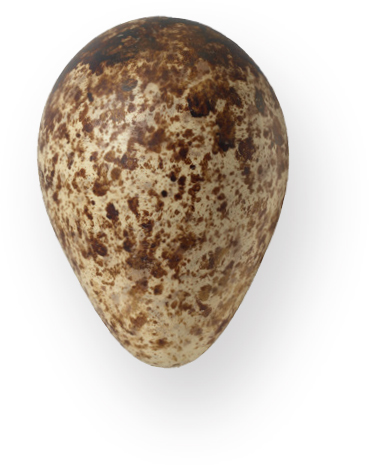
CHARADRIIFORMES

ADULT BIRD SIZE
11½–12½ in (29–32 cm)
INCUBATION
20–23 days
CLUTCH SIZE
3–4 eggs
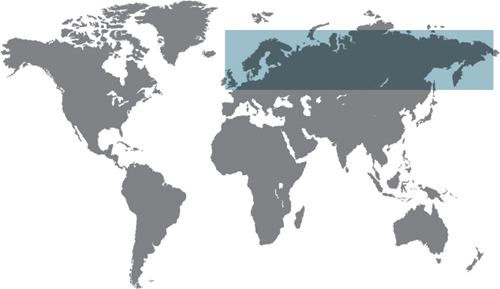
|
ORDER |
Charadriiformes |
|
FAMILY |
Scolopacidae |
|
BREEDING RANGE |
Northern Eurasia |
|
BREEDING HABITAT |
Wetlands, marshes, and river deltas |
|
NEST TYPE AND PLACEMENT |
Shallow scrape, lined with leaves and stems |
|
CONSERVATION STATUS |
Least concern |
|
COLLECTION NO. |
FMNH 5819 |
The Ruff has what is possibly the most complex set of gender roles among birds, with not two, not three, but four sex-specific plumage types: three types of males, and at least one type of female. Unlike most waders or shorebirds, nesting and parenting for the Ruff is done by the female only. Instead of providing paternal care, the males spend most of the breeding season displaying in social flocks, called leks, whose sole purpose is to attract females. Why should a male display next to many other males, some of whom may be more impressive and attractive to the females? With the Ruff, it is because females are more attracted to larger leks; displaying alone would yield few or no matings at all.
The three types of male Ruffs include territorial individuals who carry ornamental collar feathers and do most of the displaying, satellite males who are less colorful and display on the edge of the lek, and female-mimic males. Female-mimics develop plumage that resembles a female’s, allowing them to get into the lek on the sly and breed with some of the actual females. These male roles have been shown to be genetically inherited.
The egg of the Ruff is sandy buff or greenish gray in color with heavy reddish brown maculation, and with a second layer of spots in lavender. It measures 1¾ x 1¼ in (44 x 31 mm) in size. The nest is hidden under tall grasses and tussocks to avoid predation by visually hunting predators.
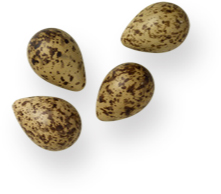
Clutch

CHARADRIIFORMES
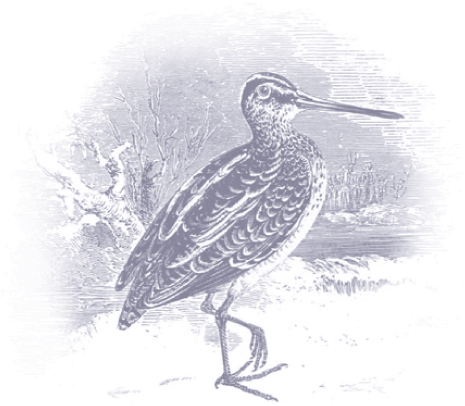
ADULT BIRD SIZE
10–10½ in (25–27 cm)
INCUBATION
18–21 days
CLUTCH SIZE
4 eggs
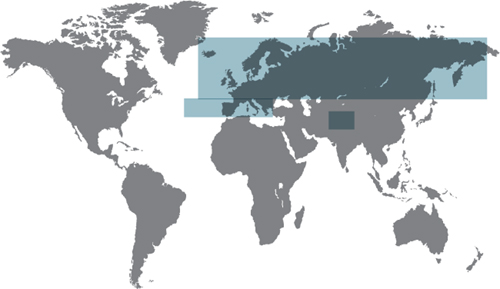
|
ORDER |
Charadriiformes |
|
FAMILY |
Scolopacidae |
|
BREEDING RANGE |
Arctic and temperate montane Eurasia |
|
BREEDING HABITAT |
Marshes, bogs, tundra wetlands |
|
NEST TYPE AND PLACEMENT |
Grass-lined hollow in wet meadows, well hidden under grass leaves and stems |
|
CONSERVATION STATUS |
Least concern |
|
COLLECTION NO. |
FMNH 18718 |
The Common Snipe is a very distinctive shorebird species, with a richly reddish brown and sharply striped plumage, an orange and black, fan-shaped tail, and a long, straight bill almost half as long as the rest of the body. Yet few people will ever see this snipe in bright daylight, because outside of its far-northern breeding grounds, it typically stays low to the ground, where it is camouflaged in marshy vegetation.
However, occasional conspicuousness is the means through which snipes escape predators and attract mates; when flushed by danger, these birds call out loudly and fly away in a confusing zigzag pattern. In turn, on the breeding grounds, males complete several circles on the wing above the display site from where the female might be watching. The males then make several shallow dives in which they spread their stiff tail feathers. The air rushing through the tail generates a loud sound. Because this sound is not generated by vocal chords, bioacousticians call this process of sound-making by feathers “sonation.”
The egg of the Common Snipe is pale grayish to dark green in background color with rich brown spotting, and 1½ x 1⅛ in (39 x 28 mm) in size. The coloration of the eggs, hatchlings, and the attending parents all provide great camouflage in marsh vegetation. Both parents look after the young, but each takes half of the brood under their own, separate care.


Clutch

CHARADRIIFORMES

ADULT BIRD SIZE
10½–12 in (27–31 cm)
INCUBATION
20–22 days
CLUTCH SIZE
4 eggs
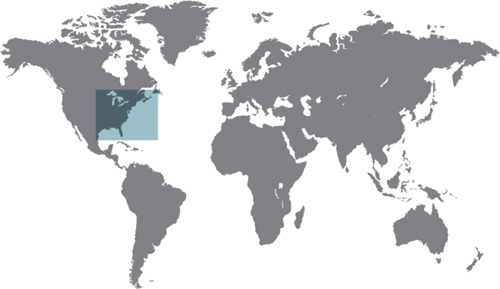
|
ORDER |
Charadriiformes |
|
FAMILY |
Scolopacidae |
|
BREEDING RANGE |
Eastern North America |
|
BREEDING HABITAT |
Clearings in forests, shrubby areas near water |
|
NEST TYPE AND PLACEMENT |
Shallow ground nest of twigs and leaves, with brushy or sapling cover |
|
CONSERVATION STATUS |
Least concern |
|
COLLECTION NO. |
FMNH 16003 |
The American Woodcock is a shorebird species which has taken to living in open woodland and adjacent fields in eastern North America. It is also one of the few wader-relatives that is still a commonly hunted game species; in the United States alone, around half a million woodcocks are killed each year.
Generally an inconspicuous species, male woodcocks put on quite a show to attract their mates each spring. They fly, zigzag, flutter, and make dives in midair, while calling and chirping to any nearby female on the ground. If the female likes this show, she flies directly in and lands nearby on the ground. The species is polygynous, and the male will continue his attempts to attract new females throughout the breeding season.
The egg of the American Woodcock is creamy buff in background color with brown spotting, and measures 1½ x 1⅛ in (38 x 29 mm) in size. The female attends the eggs and the chicks on her own, even if the nest is typically within 500 ft (150 m) of the male’s singing grounds. Like their mother, the precocial chicks are superbly camouflaged as they feed on their own, probing the soft soil and leaf litter with their already elongated beaks.


Clutch

CHARADRIIFORMES

ADULT BIRD SIZE
8½–9 in (22–23 cm)
INCUBATION
18–23 days
CLUTCH SIZE
4 eggs

|
ORDER |
Charadriiformes |
|
FAMILY |
Scolopacidae |
|
BREEDING RANGE |
Western and central North America |
|
BREEDING HABITAT |
Wetlands and lakes in prairie grasslands |
|
NEST TYPE AND PLACEMENT |
A shallow scrape in the ground, lined with grass leaves |
|
CONSERVATION STATUS |
Least concern |
|
COLLECTION NO. |
FMNH 5696 |
The Wilson’s Phalarope is one of five species of birds named after Alexander Wilson, the nineteenth-century scientist often considered the father of American ornithology. It is the largest of the phalaropes, and shares many breeding characteristics with the other species, including reversed sexual dimorphism of size, plumage, and parental behaviors. The females are larger and brighter than the males: they protect the territory, while the males are the sole caretakers of the young.
Phalarope females often mate with more than one male, abandoning the first clutch of eggs to mate and nest with another male. Females do not incubate the eggs but they do provide protection from danger. When a predator approaches, the female positions herself to cover the eggs in a fake incubation posture, while the male does a broken-wing display to lead the predator away. Once the predator leaves, the female herself walks away from the nest.
The egg of the Wilson’s Phalarope is buff colored in background with large brown spots, and it measures 1⅝ x 1⅓ in (41 x 34 mm) in size. The female and the male start the nest together, but once egg laying is complete, the female leaves the breeding grounds, and the male completes the parental care duties of attending and protecting the young.
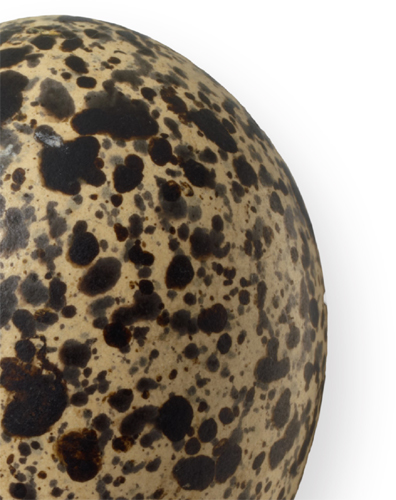
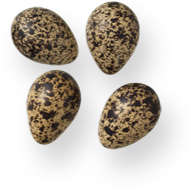
Clutch
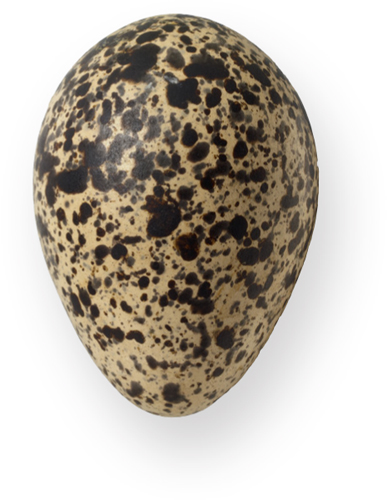
CHARADRIIFORMES

ADULT BIRD SIZE
7½–8½ in (19–22 cm)
INCUBATION
18–19 days
CLUTCH SIZE
2 eggs

|
ORDER |
Charadriiformes |
|
FAMILY |
Glareolidae |
|
BREEDING RANGE |
North Africa and southwest Asia |
|
BREEDING HABITAT |
Dry open country, semidesert |
|
NEST TYPE AND PLACEMENT |
Simple, unlined depression on the ground |
|
CONSERVATION STATUS |
Least concern |
|
COLLECTION NO. |
FMNH 15345 |
Coursers are long-legged like many other shorebirds, but their lifestyle has evolved to be independent from bodies of water for feeding and breeding. The Cream-colored Courser prefers to breed in dry and semidesert habitats throughout its wide distribution. Locally, this habitat preference has caused population declines, especially on the Canary Islands where tourism-related development has encroached on the flat and open breeding habitats favored by the species. In other regions, especially in the Arabian peninsula, this species has benefited from successful habitat-conservation efforts aimed at larger, historically hunted gamebird species.
Coursers show a consistent seasonality in breeding. Throughout their predominantly desert habitat, they begin to nest in the early spring, just after the brief winter rains have ended. But the species will also re-nest and lay a new clutch if the first breeding attempt fails. This flexibility in restarting the breeding cycle allows them to reproduce in response to unpredictable rains.
The egg of the Cream-colored Courser is sandy brown in background, with brown maculation, and measures 1⅓ x 1 in (34 x 26 mm) in size. The chicks are nidifugous, meaning that they leave the nest soon after hatching. Nonetheless, they still require protection and provisioning by their parents before fledging.
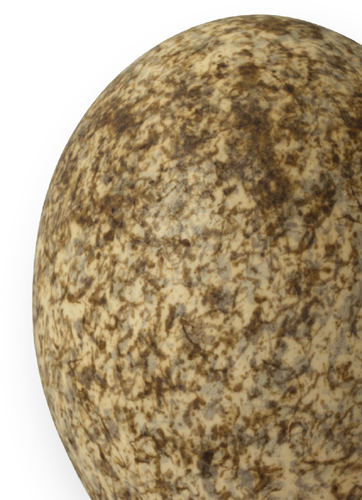
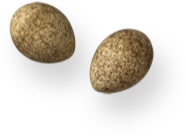
Clutch
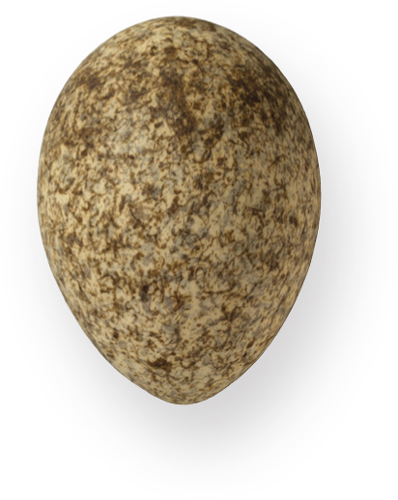
CHARADRIIFORMES
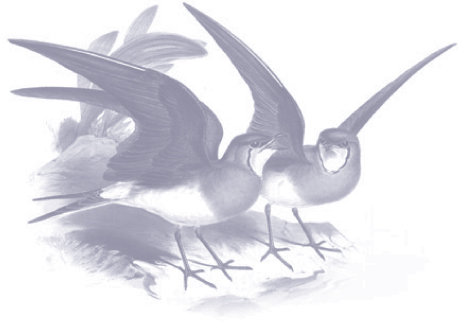
ADULT BIRD SIZE
9½–11 in (24–28 cm)
INCUBATION
35–42 days
CLUTCH SIZE
3–4 eggs

|
ORDER |
Charadriiformes |
|
FAMILY |
Glareolidae |
|
BREEDING RANGE |
Southeast Europe, southwest Asia |
|
BREEDING HABITAT |
Open, short grass steppe, plowed fields, grazed meadows |
|
NEST TYPE AND PLACEMENT |
Shallow depression on ground, with small pieces of twigs and dried leaves |
|
CONSERVATION STATUS |
Near threatened |
|
COLLECTION NO. |
FMNH 20765 |
Despite being genetically close to shorebirds, pratincoles are not at all like shorebirds in appearance and behavior. In shape and flight they are more like swifts and swallows. They catch flying prey on the wing, swooping around grazing herds of wild and domestic livestock. With the increasing pressure to control insects with pesticides, and the ongoing conversion of open fields into agricultural areas or managed pastures, the Black-winged Pratincole has experienced a severe decline of 50 percent of its estimated population size in just ten years of intensive monitoring in Europe and central Asia.
Despite its unique appearance, this pratincole shares several reproductive traits with many other shorebirds, including ground nesting and typical clutch sizes of four eggs. The species breeds in loose, small-to-medium-sized colonies of between five and 500 pairs. Larger colonies are often sited near wetter meadows and areas of water that provide plentiful insect prey for the adults and their chicks.
The egg of the Black-winged Pratincole is roundish, buff to olive in background color with heavy dark-brown maculation, and measures 11∕16 x ⅞ in (27 x 22 mm) in size. Both parents incubate the eggs, but the ground nests in open pastures are vulnerable to trampling by livestock.

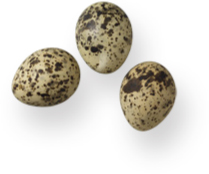
Clutch

CHARADRIIFORMES

ADULT BIRD SIZE
9–11 in (23–28cm)
INCUBATION
15–21 days
CLUTCH SIZE
2–3 eggs
|
ORDER |
Charadriiformes |
|
FAMILY |
Rostratulidae |
|
BREEDING RANGE |
Sub-Saharan Africa, south and southwest Asia |
|
BREEDING HABITAT |
Wetlands, reed beds, near shores of ponds and streams |
|
NEST TYPE AND PLACEMENT |
Shallow scrape in soft ground, lined with stems and leaves, typically near water |
|
CONSERVATION STATUS |
Least concern |
|
COLLECTION NO. |
FMNH 20744 |
Painted-Snipes are not close relatives of the “real” snipes. Like snipes, they use their long beaks to probe for aquatic prey, but their appearance is more like that of a typical wader, with long legs. The female is one of the most colorful shorebird species, and sports a rich chocolate brown plumage and distinctive chest bands, compared to the smaller and plainer, brown and striped male. As might be expected from this “reversed” sexual dimorphism, this species is polyandrous, with the female initiating courtship with the male, before she lays the eggs for him. Then she moves on to mate with another male.
The male provides all parental care of the eggs and chicks. He will lead chicks to feeding sites, and away from predators into dense vegetation. When threatened, the male also carries the chicks directly, by tucking them under his wings as he moves away from danger.
The egg of the Greater Painted-Snipe is beige in background color, has fine dark brown maculation, and measures 1½ x 1⅛ in (38 x 28 mm). Only the male incubates the eggs; his plumage is far less colorful than the female’s and so it affords him camouflage to hide from predators during incubation.

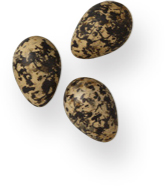
Clutch
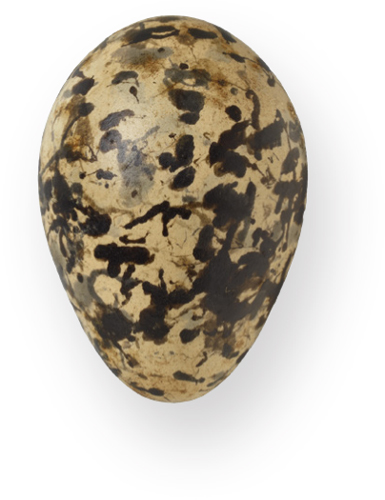
CHARADRIIFORMES
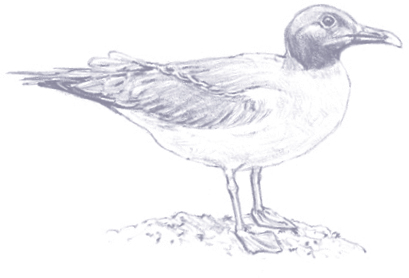
ADULT BIRD SIZE
26 in (66 cm)
INCUBATION
31–34 days
CLUTCH SIZE
1 egg

|
ORDER |
Charadriiformes |
|
FAMILY |
Laridae |
|
BREEDING RANGE |
Galapagos Islands (Ecuador), and Malpelo Island (Colombia) |
|
BREEDING HABITAT |
Rocky cliffs and beaches |
|
NEST TYPE AND PLACEMENT |
Small platform of pebbles, sticks, sea urchin spines, and coral pieces, to prevent the egg from rolling away |
|
CONSERVATION STATUS |
Least concern |
|
COLLECTION NO. |
FMNH 18981 |
This is a highly social species, and it nests and forages in large groups off the lava-rock beaches of the Galapagos Islands. It is a near-endemic of the Galapagos, with just a few pairs breeding on another island between the Galapagos and mainland South America. This species changes both its plumage and skin coloration to prepare for the breeding season, with its white head turning grayish black and its black fleshy eye ring turning bright red. Young birds often do not attempt to breed until about five years of age.
The Swallow-tailed Gull is the only strictly nighttime-hunting shorebird or gull species. It leaves at sunset in loud groups for foraging trips to catch nocturnal crabs. Two traits help with this behavior: its eyes are larger than expected for its body size, and each eye has an extra layer of reflective tissue opposite the lens, helping the bird to see better in minimal light.

The egg of the Swallow-tailed Gull is off-white in background color with gray and dark brown maculation, and measures 2⅝ x 113∕16 in (66 x 46 mm) in size. During incubation the parent faces away from the ocean, a behavior typically seen in other gulls nesting on exposed shorelines.
CHARADRIIFORMES

ADULT BIRD SIZE
14–15½ in (35–39 cm)
INCUBATION
23–32 days
CLUTCH SIZE
1–3 eggs
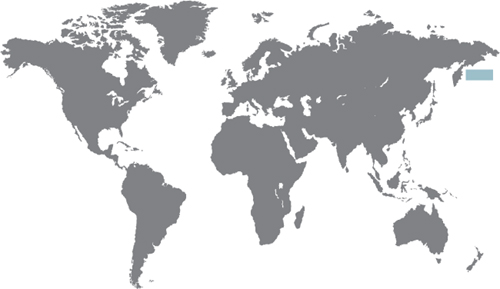
|
ORDER |
Charadriiformes |
|
FAMILY |
Laridae |
|
BREEDING RANGE |
Aleutian Islands, north Pacific |
|
BREEDING HABITAT |
Rock ledges on vertical sea cliffs |
|
NEST TYPE AND PLACEMENT |
Ground nests built up from mud, grass, seaweed, located on steep cliffs |
|
CONSERVATION STATUS |
Vulnerable |
|
COLLECTION NO. |
FMNH 15076 |
The Red-legged Kittiwake is a true “seagull” in the sense that it is one of the few gull species with marine-only breeding, wintering, and foraging ranges. Nesting on just a handful of Arctic islands in the Bering Sea, it feeds on small fish and crustaceans from the ocean. After the nesting season is over, this kittiwake is rarely seen near shore, spending the non-breeding season far out at sea.
The global population of this species has always been limited to just a handful of breeding localities on small islands, but in the last four decades alone its numbers have dropped by 50 percent. It has been suggested that lower marine productivity in the region, partly the result of human-caused overfishing, may be responsible for these consistent declines. It is also feared that increased commercial activity in the region will introduce Norway rats, a fierce nest predator, to the islands with kittiwake nesting colonies. Thus intensive monitoring and management of this vulnerable species and its breeding sites is needed.
The egg of the Red-legged Kittiwake is brownish in background color with dark brown and lilac maculation, and measures 2¼ x 1⅝ in (58 x 41 mm) in size. Unlike most gull chicks, which begin to wander as they grow, the kittiwake’s chick stays in the nest for nearly five weeks, probably to avoid falling off the steep cliffs used for nesting.
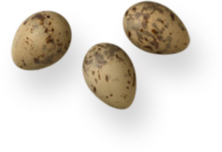
Clutch
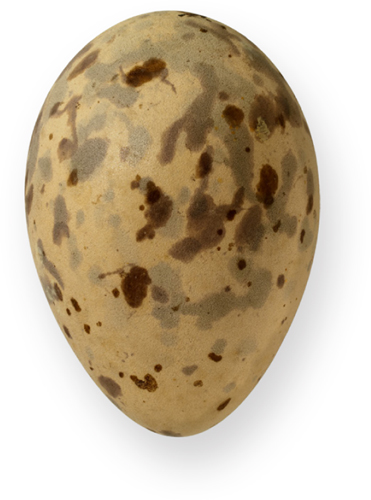
CHARADRIIFORMES

ADULT BIRD SIZE
10½–13 in (27–33 cm)
INCUBATION
25 days
CLUTCH SIZE
2–3 eggs

|
ORDER |
Charadriiformes |
|
FAMILY |
Laridae |
|
BREEDING RANGE |
Northernmost parts of North America, Europe, and Asia |
|
BREEDING HABITAT |
Open fields, moist tundra grounds, typically near freshwater ponds |
|
NEST TYPE AND PLACEMENT |
Depression in vegetation, typically with no additional lining |
|
CONSERVATION STATUS |
Least concern |
|
COLLECTION NO. |
FMNH 15080 |
The Sabine’s Gull is the only member of its genus. Genetically, its closest relative is another Arctic-nesting gull, the all-white Ivory Gull, which is also a monotypic, or single, member of its own genus. DNA studies show that the two species diverged from one another more than two million years ago, each evolving into species with distinct genetic and morphological traits.
The Sabine’s Gull has a delicate flight more closely resembling that of terns than gulls. But like other gulls, it hovers over the water to spot and pick prey items from the water surface; it also forages by swimming around, by walking on mudflats, and, like a phalarope, by spinning in shallow water to draw up prey hidden in the mud below. During the breeding season on the tundra, both parents and chicks forage over and in freshwater ponds. In winter, the species becomes pelagic, and forages offshore in the ocean.
The egg of the Sabine’s Gull is olive brown in background color with irregular, dark greenish brown maculation, and measures 1¾ x 1¼ in (45 x 32 mm) in dimensions. The hatchlings are relatively precocial; they may leave the nest within days of hatching, and the parents lead them to open water, where the chicks quickly start feeding themselves.

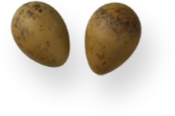
Clutch

RING-BILLED GULL
CHARADRIIFORMES

ADULT BIRD SIZE
18–21½ in (46–54 cm)
INCUBATION
20–31 days
CLUTCH SIZE
2–4 eggs

|
ORDER |
Charadriiformes |
|
FAMILY |
Laridae |
|
BREEDING RANGE |
Temperate North America |
|
BREEDING HABITAT |
Open fields near rivers, lakes, and coastal areas |
|
NEST TYPE AND PLACEMENT |
A ground scrape, lined with twigs, sticks, leaves, or lichens |
|
CONSERVATION STATUS |
Least concern |
|
COLLECTION NO. |
FMNH 372 |
Ring-billed Gulls breed further inland than most other gull species, and their large nesting colonies are typically associated with freshwater lakes, swamps, and streams. These gulls also are the most common species seen at municipal garbage-dumps, which have boosted local colony sizes and rates of reproduction. When the dumps close, or switch to indoor processing, Ring-billed Gull population densities plummet.
Nesting in a large colony, these birds rely on an acute sense of recognition of space and individuals: each must identify its own nest, mate, eggs, and chicks. After hatching, the nestlings stay around for just four to five days, and then they become mobile. This puts extra pressure on parents to recognize their own chicks by sound and sight. Mistakes happen, and some young are lost by their parents. But a few may also be adopted by foster-parents and survive to fledge successfully.
The egg of the Ring-billed Gull is grayish to brown in background color with brown to lilac maculation, and measures 2⅓ x 1⅔ in (59 x 42 mm) in size. In some colonies, observers have also found large egg-shaped pebbles in the nest; these may provide distraction for egg-predators or represent overeager parents confusing rocks for their own eggs.
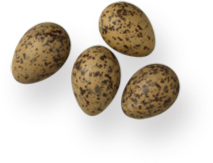
Clutch

CHARADRIIFORMES

ADULT BIRD SIZE
23½–25 in (60–64 cm)
INCUBATION
28–30 days
CLUTCH SIZE
2–4 eggs

|
ORDER |
Charadriiformes |
|
FAMILY |
Laridae |
|
BREEDING RANGE |
Northern North America, Europe, and Asia |
|
BREEDING HABITAT |
Islands, beaches, and wetlands |
|
NEST TYPE AND PLACEMENT |
Scraping in soft soil, sand, or short vegetation |
|
CONSERVATION STATUS |
Least concern |
|
COLLECTION NO. |
FMNH 2416 |
Herring Gulls are conspicuous, noisy, and densely distributed along most northern hemisphere coastlines throughout the year, making them one of the best-known species to local beachgoers. They readily feed not only on fish and crustaceans, but also on leftovers and other garbage on the beach or at garbage dumps. These gulls are also prominent predators of eggs and chicks of other colonially nesting waterbirds including smaller gulls and terns, and also shorebirds, shearwaters, petrels, and puffins.
The breeding season begins with prominent displays and courtship between the sexes: the male, settling on a display territory, is approached by an interested female. If he accepts, they call and raise their bodies in synchrony, and eventually copulate. The nest site is chosen by both members of the pair, and parental duties are also shared. If the nest is successful, and both mates return to the breeding site the following year, the pair bond is maintained. Failed nesting attempts are typically followed by divorce.
The egg of the Herring Gull is olive in color with a darker brown blotching. It measures 2½ x 1⅞ in (65 x 48 mm) in dimensions. Although these gulls are themselves egg predators of other smaller species, their own eggs are also vulnerable to predation by even larger gulls, corvids, herons, and mammals like raccoons.

Clutch

CHARADRIIFORMES

ADULT BIRD SIZE
15½–17½ in (40–45 cm)
INCUBATION
33–36 days
CLUTCH SIZE
1 egg

|
ORDER |
Charadriiformes |
|
FAMILY |
Laridae |
|
BREEDING RANGE |
Tropical and subtropical coasts and oceanic islands around the world |
|
BREEDING HABITAT |
Isolated islands, offshore islets |
|
NEST TYPE AND PLACEMENT |
A platform nest of sticks and twigs, typically on cliffs, or in trees and bushes; occasionally lays the egg on bare ground |
|
CONSERVATION STATUS |
Least concern |
|
COLLECTION NO. |
FMNH 4837 |
Breeding is a colonial affair for the Brown (or Common) Noddies. On suitable, remote islands, entire patches of forest, or cliffs, may be covered by thousands of noddies calling, displaying, incubating eggs, or feeding chicks. The female and the male bow and nod to one another in their nuptial displays, accompanied by courtship feeding and flights, during which the male transfers a small freshly caught fish to the female.
Incubation is carried out by both sexes; they take turns on the nest every one or two days while their mate is feeding at sea. Once the chick hatches, the parents are efficient providers, and the chick quickly reaches the weight of the parents in just three weeks. At the time of fledging, the chick can even weigh more than the parents, but once the chick takes flight, it quickly loses the excess weight, learning how to fend for itself while the parents feed it less and less.
The egg of the Brown Noddy is a pinky cream in background color with lilac and chestnut maculation, and measures 2 x 1⅜ in (52 x 35 mm) in dimensions. When these birds nest on trees, many eggs and chicks accidentally fall from high branches, leaving the ground underneath a veritable cemetery of past breeding seasons.
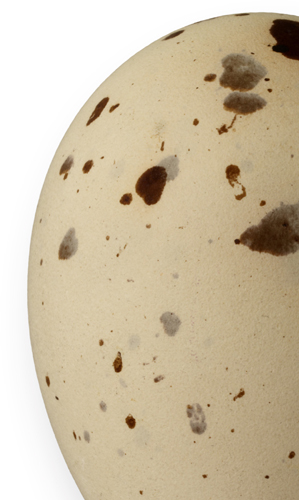

CHARADRIIFORMES

ADULT BIRD SIZE
13½–15½ in (35–40 cm)
INCUBATION
34 days
CLUTCH SIZE
1 egg

|
ORDER |
Charadriiformes |
|
FAMILY |
Laridae |
|
BREEDING RANGE |
Tropical and subtropical islands in all three major oceans |
|
BREEDING HABITAT |
Sandy or rocky islands with tree stands to provide nesting sites |
|
NEST TYPE AND PLACEMENT |
A loose platform of twigs and leaves on a tree branch |
|
CONSERVATION STATUS |
Least concern |
|
COLLECTION NO. |
FMNH 14797 |
The Black Noddy, which is also known as the White-capped Noddy, is most commonly seen offshore near remote oceanic islands, and in dense nesting colonies weighing down tree branches on sandy atolls and other low-lying islands. When at sea, these birds do not dive into the water after food, but instead rely on tuna and other schools of predatory fish to drive small fish to the surface, where the noddies can scoop them up in an act of kleptoparasitism.
Black Noddy parents consider their nest to be the home base; if a chick wanders along the branch far from the nest, or falls to the ground, it will not be recognized or attended by the parents, and it usually perishes. The adults will then wait until the next nesting season to attempt reproduction again. Pairs return to the same island, and often to the same branch of the same tree, to breed annually. It takes three to five years for juveniles to become fully mature and make their first breeding attempt.

The egg of the Black Noddy is reddish yellow in background color with rusty brown maculation, and is 111∕16 x 1¼ in (43 x 31 mm) in size. The egg is laid on a platform of twigs, leaves, and dried fecal matter, with the nest often being reused over consecutive breeding seasons.
CHARADRIIFORMES
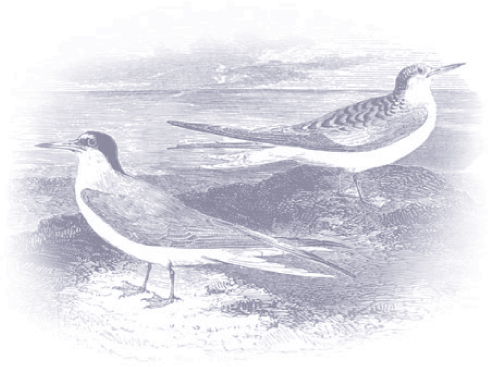
ADULT BIRD SIZE
8½–9 in (21–23 cm)
INCUBATION
20–22 days
CLUTCH SIZE
2–3 eggs

|
ORDER |
Charadriiformes |
|
FAMILY |
Laridae |
|
BREEDING RANGE |
Southern coasts and inland major river systems of North America |
|
BREEDING HABITAT |
Gravel or sandy beaches and coastlines on the sea, lakes, or rivers |
|
NEST TYPE AND PLACEMENT |
Ground scraping in the sand or gravel, occasionally on rooftops |
|
CONSERVATION STATUS |
Least concern |
|
COLLECTION NO. |
FMNH 18322 |
Least Terns prefer low-lying, sandy shores for nesting and breeding, which makes their greatest competitors none other than people. Habitat modification has thus negatively impacted seashore breeding colonies of this small tern species. Similarly, the inland populations that settle on small alluvial islands of slow-flowing rivers in North America have also been hurt by management to artificially alter water levels that coincides with the breeding season, and in general by the building up of river banks and construction of dams. Both of these activities interfere with the formation of temporary sand banks, further reducing the available nesting habitats for this tern species.
The eggs are highly variable in color and markings, often within the same clutch, possibly to enhance camouflage and crypsis. Perhaps because of this variation, the eggs are not individually recognized and parent terns readily retrieve and adopt eggs of other pairs nesting nearby.
The egg of the Least Tern is olive buff in background color with purple and brown streaks and maculation, and is 1¼ x ⅞ in (31 x 23 mm) in dimensions. Both sexes make and repeatedly visit several nest scrapes, but it is the female who settles on one site for the laying of the eggs.
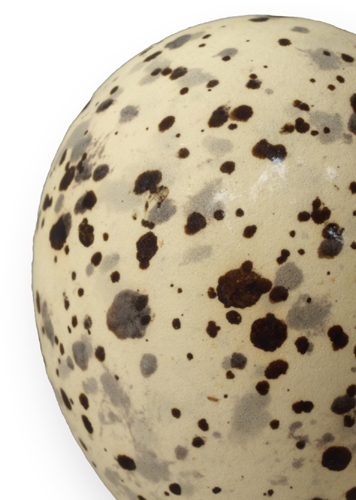
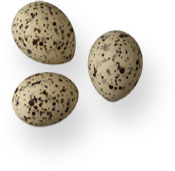
Clutch
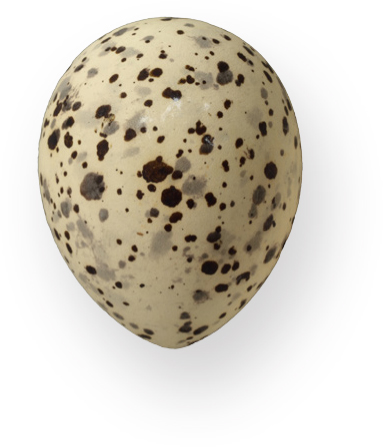
CHARADRIIFORMES

ADULT BIRD SIZE
13–15 in (33–38 cm)
INCUBATION
21–23 days
CLUTCH SIZE
3 eggs
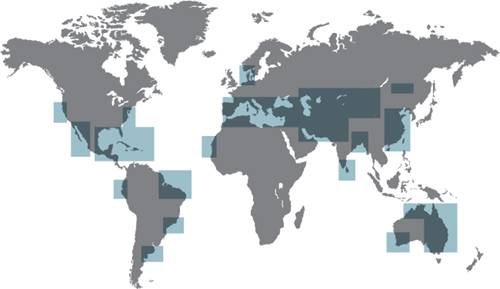
|
ORDER |
Charadriiformes |
|
FAMILY |
Laridae |
|
BREEDING RANGE |
Southern Europe, temperate Asia, coastal North America, South America, and Australia |
|
BREEDING HABITAT |
Lakes, marshes, and seashores |
|
NEST TYPE AND PLACEMENT |
Shallow scrape in the ground, sometimes rimmed with sticks and other vegetation matter |
|
CONSERVATION STATUS |
Least concern |
|
COLLECTION NO. |
FMNH 4543 |
Gull-billed Terns belong to a monotypic genus of terns, which implies a degree of evolutionary uniqueness and isolation. Accordingly, the mandibles and the foraging strategies of this tern are unlike any of their relatives: they have a thick but stubby bill, and hunt by catching insects in midair, instead of diving into the water for fish.
Mating displays of this species also are atypical compared to most other terns. Instead of incorporating aerial elements, mating takes place solely on the ground or on sandy banks suitable for nesting. The female and male work together to establish the nest site, collect the few pieces of vegetation outlining the nest, incubate the eggs, and locate and provision the chicks once they leave the nest and mix in with the chicks from other nests in the small breeding colony.
The egg of the Gull-billed Tern is pinkish buff to ivory yellow in background color with dark brown maculation, and measures 1⅞ x 1⅓ in (47 x 34 mm). The eggs are well camouflaged and the chicks hatch with open eyes and are mobile within hours. Both these factors reduce the chances of predation.

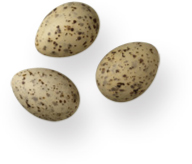
Clutch
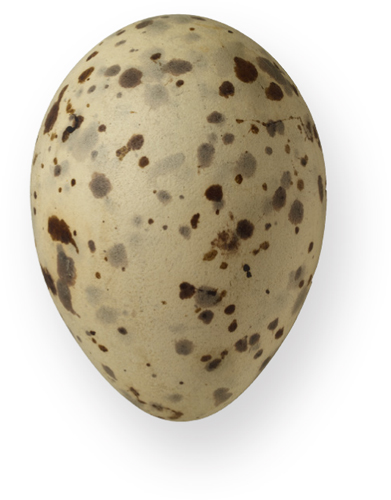
CHARADRIIFORMES

ADULT BIRD SIZE
18½–21½ in (47–54 cm)
INCUBATION
26–28 days
CLUTCH SIZE
1–3 eggs
|
ORDER |
Charadriiformes |
|
FAMILY |
Laridae |
|
BREEDING RANGE |
Australasia, Asia, Africa, Europe, and North America |
|
BREEDING HABITAT |
Beaches and shorelines of large lakes, seas, and oceans |
|
NEST TYPE AND PLACEMENT |
A scrape in the ground, lined with dry vegetation, sticks, small pebbles, and broken shells |
|
CONSERVATION STATUS |
Least concern |
|
COLLECTION NO. |
FMNH 18312 |
This conspicuous tern is the largest tern species in the world, with similar dimensions to some medium-sized gulls. It breeds in scattered colonies on the shores of lakes and other bodies of water across all continents except South America and Antarctica, making it an interesting species with respect to the genetic connectedness of such widely dispersed breeding populations. Based on morphology, all these populations are similar.
Locally, Caspian Terns nest in small, loose colonies, often near other terns and gulls. The parents establish the nest and incubate the eggs together. They take turns in feeding the nestlings, diving for fish and other aquatic prey. The chicks stay in or around the nest for several days, and then they become mobile. The adults encourage the young to separate from their siblings, even if it means that the parents have to locate and recognize their own chicks as individuals (and not based on the location of the nest site alone). This separation reduces the chance of predators wiping out the whole brood at once.
The egg of the Caspian Tern is buff in background color with dark brown irregular blotching, and measures 2½ x 1¾ (65 x 45 mm) in dimensions. Nesting colonies have been increasingly established on dredged mounds and other habitats on shorelines either generated or modified by humans, thus locally increasing population sizes.

Clutch

CHARADRIIFORMES
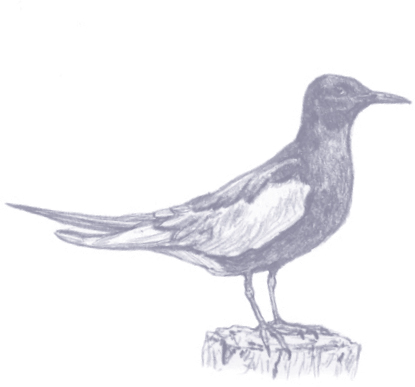
ADULT BIRD SIZE
8½–10 in (22–25 cm)
INCUBATION
18–22 days
CLUTCH SIZE
2–4 eggs

|
ORDER |
Charadriiformes |
|
FAMILY |
Laridae |
|
BREEDING RANGE |
Temperate Eurasia |
|
BREEDING HABITAT |
Marshes, wetlands, lake shores |
|
NEST TYPE AND PLACEMENT |
A built-up platform of small reed stems and other vegetation, on the shore, or floating on the water |
|
CONSERVATION STATUS |
Least concern |
|
COLLECTION NO. |
FMNH 15082 |
White-winged Terns live and forage near water, but unlike terns with mostly white plumages (genus Sterna), these birds do not plunge-dive for fish. Instead they hunt for insects by flying above and near the water, or pick prey directly off the water’s surface. In the nesting season, they stay near freshwater ponds, swamps, and marshes, but in the non-breeding season they wander to coastal areas, as well as to drier, inland, open fields.
On the breeding grounds, White-winged Terns maintain their own colonies, although in some European populations, apparently hybrid individuals with intermediate plumages between White-winged and Black Terns occur. Hybridization such as this allows scientists to assess the behavioral cues and the genetic consequences of recognizing one’s own species and the mistakes that some individuals inevitably make in this recognition process.
The egg of the White-winged Tern is buff to pale stone in background color with black and brown maculation, and measures 1⅜ x 1 in (35 x 25 mm) in size. Although individual pairs are fragile and too weak to attack egg predators, by their nesting in small, loose colonies of 20–40 pairs, the nests have a greater chance of success.
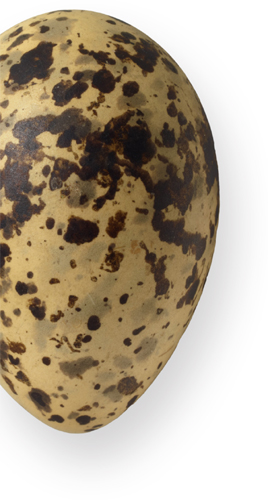

Clutch

CHARADRIIFORMES

ADULT BIRD SIZE
12–15 in (31–38 cm)
INCUBATION
21–22 days
CLUTCH SIZE
2–3 eggs
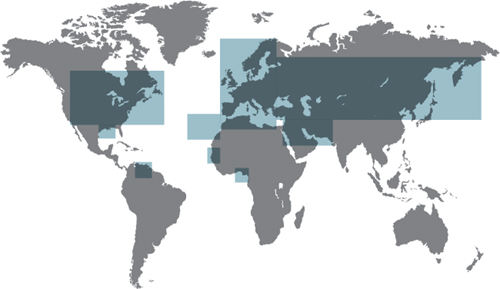
|
ORDER |
Charadriiformes |
|
FAMILY |
Laridae |
|
BREEDING RANGE |
Temperate and subarctic Eurasia, central and eastern North America |
|
BREEDING HABITAT |
Flat, sandy, or rocky shores, beaches, and grassy patches |
|
NEST TYPE AND PLACEMENT |
Ground scrape in soil and sand, may be unlined or contain plant debris around the edges |
|
CONSERVATION STATUS |
Least concern |
|
COLLECTION NO. |
FMNH 4649 |
Common Terns are thrifty and they have come to adapt to many human-induced changes to their shoreline-based habitats. They readily nest near humans, in places such as the edges of parking lots, or on abandoned rafts and other structures in or near the water. This species also shares colonies with several other terns, including the locally endangered Roseate Tern.
The Common Tern is a creature of habit. It returns to the same colony where it bred before, and may even occupy the same small patch of grassy area with the same mate. Males arrive and settle on the territory first, and then wait for several days for their mate to turn up at the colony. However, if the female is more than five days late, the male may pair up with a new female to begin the nesting attempt, ensuring enough time for incubation and chick development.
The egg of the Common Tern is olive to buff in background color with dark brown maculation, and 1⅔ x 1⅛ in (42 x 30 mm) in size. Once hatched, the chicks begin to wander around the colony; unlike the situation in dense colonies of gulls, tern chicks are tolerated by other adults even away from their own nest.

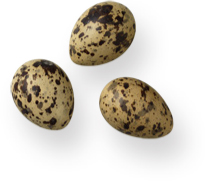
Clutch

CHARADRIIFORMES

ADULT BIRD SIZE
13–15½ in (33–39 cm)
INCUBATION
22–27 days
CLUTCH SIZE
2 eggs
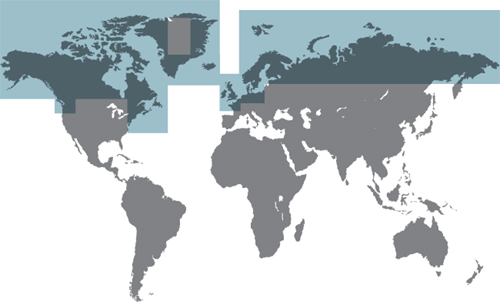
|
ORDER |
Charadriiformes |
|
FAMILY |
Laridae |
|
BREEDING RANGE |
Arctic and subarctic North America and Eurasia |
|
BREEDING HABITAT |
Open tundra, clearings in boreal forests, rocky beaches, and islands |
|
NEST TYPE AND PLACEMENT |
Scrape in the open ground, or shallow depression in short vegetation |
|
CONSERVATION STATUS |
Least concern |
|
COLLECTION NO. |
FMNH 4673 |
The Arctic Tern is best known for its extraordinary annual migration, departing the Arctic breeding grounds and making its way to the Southern Ocean of the Antarctic; these journeys are undertaken both by adults and by each year’s juveniles. Despite the energetic demands and the many dangers potentially encountered while criss-crossing half the globe, this species has a long lifespan, living up to 30 years of age.
On the breeding ground, the Arctic Tern forms colonies with other terns. It vigorously defends its nesting site against any intruders, no matter their size, even to the extent of occasionally drawing blood from researchers monitoring the colony. Fast- and agile-flying, these terns behave boldly and mob predators approaching their nests. Their aerial skills are such that they are able to outmaneuver and escape a predator should it decide to switch its attention to the parents.
The egg of the Arctic Tern is olive to buff in background color with dark brown mottling, and measures 1⅝ x 1⅛ in (41 x 29 mm) in size. Both parents incubate the eggs and feed the mobile, but dependent, chicks after hatching.

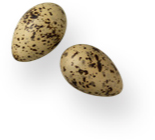
Clutch

CHARADRIIFORMES
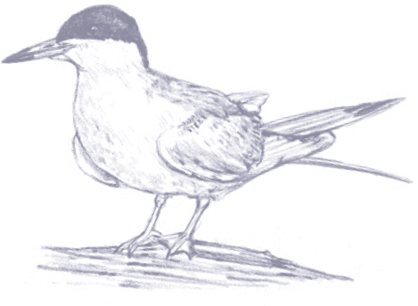
ADULT BIRD SIZE
13–14 in (33–36 cm)
INCUBATION
25–32 days
CLUTCH SIZE
2–3 eggs

|
ORDER |
Charadriiformes |
|
FAMILY |
Laridae |
|
BREEDING RANGE |
Temperate North America |
|
BREEDING HABITAT |
Inland wetlands and marshes |
|
NEST TYPE AND PLACEMENT |
Simple scrape in the soil, or a raft of floating vegetation, or a cup formed of and lined with plant matter on top of a mound |
|
CONSERVATION STATUS |
Least concern |
|
COLLECTION NO. |
FMNH 4585 |
Forster’s Terns occupy a predominantly temperate breeding range in North America and subtropical and tropical wintering distribution further south. Small numbers of birds, however, regularly cross the Atlantic Ocean, and spend the cold winter months near the coast of the British Isles. At that time of the year, these are the only terns present, as most European species migrate further south for the non-breeding season.
On their inland breeding grounds, this North American species nests in large colonies, with individual parents vigorously defending their nest and eggs from intruders, irrespective of the size of that potential threat. The chicks hatch with down and open eyes, are able to walk, but typically remain in the nest for weeks to be provisioned by parents. When the chicks do wander, they may find their way to near the nest of another Forster’s Tern or a Black Tern. As a result, these species occasionally feed each other’s chicks.
The egg of the Forster’s Tern is olive to buff in background coloration, with dark brown maculation concentrated around the blunt pole, and measures 1⅔ x 1¼ in (43 x 31 mm). The midwestern inland wetland breeding grounds of this species in the U.S. have suffered from habitat modification, which has negatively impacted the nesting of this and many other waterbirds in the region.

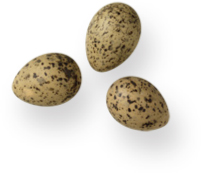
Clutch

CHARADRIIFORMES
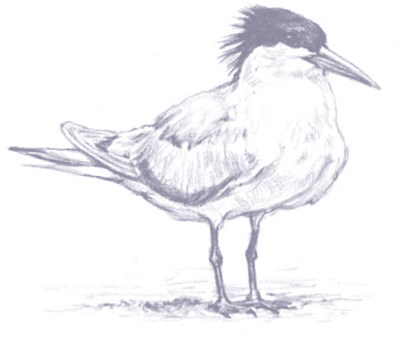
ADULT BIRD SIZE
15½–17 in (39–43 cm)
INCUBATION
25–26 days
CLUTCH SIZE
1–2 eggs
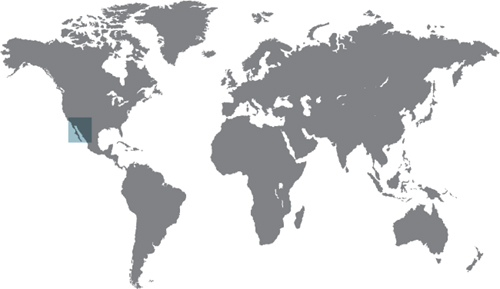
|
ORDER |
Charadriiformes |
|
FAMILY |
Laridae |
|
BREEDING RANGE |
Southern California and northwestern Mexico |
|
BREEDING HABITAT |
Low, flat, and sandy islands |
|
NEST TYPE AND PLACEMENT |
Ground scrape, in high-density colonies |
|
CONSERVATION STATUS |
Near threatened |
|
COLLECTION NO. |
FMNH 4569 |
The Elegant Tern has a globally restricted breeding range, with over 90 percent of its breeding population nesting on just a single island in the Gulf of California. Such a limited distribution automatically qualifies the species for a conservation alert and special consideration status. And although the Elegant Tern has expanded into more breeding areas in California in the last half-century, ongoing patterns of trampling, habitat modification, and predation by feral animals have negatively impacted the size and long-term prospects of several breeding colonies.
Before egg laying, the male catches and passes a fish from his bill to the female, as part of their courtship display. When selecting a nest site, these birds space themselves at just one body-length away from their nearest neighbor. Such high density serves as a passive, but highly efficient, mechanism of protection against predators, because in general only the edge-nesting pairs are then vulnerable to predation.
The egg of the Elegant Tern is purplish white in background color with black and lilac spotting, and measures 2 x 1⅜ in (52 x 35 mm) in size. These birds are rarely aggressive toward predators near the colonies; instead, they rely on nesting near each other, and also near larger gull species, for protection.


Clutch
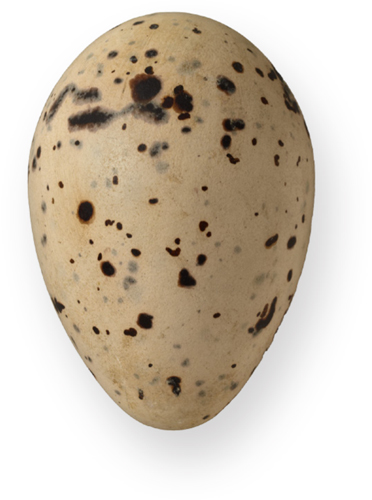
CHARADRIIFORMES
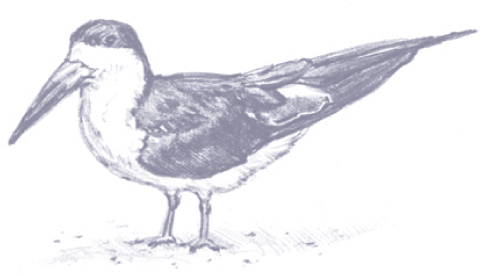
ADULT BIRD SIZE
15½–19½ in (40–50 cm)
INCUBATION
21–25 days
CLUTCH SIZE
3–5 eggs
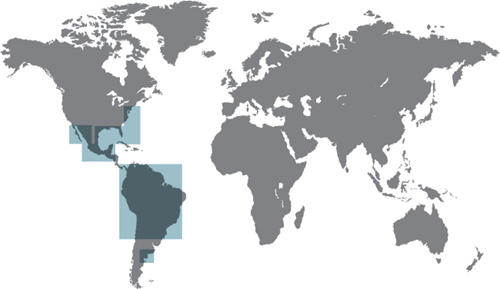
|
ORDER |
Charadriiformes |
|
FAMILY |
Laridae |
|
BREEDING RANGE |
Southern and eastern North America and lowland South America |
|
BREEDING HABITAT |
Sandy or gravel beaches |
|
NEST TYPE AND PLACEMENT |
Scrape nest in sand or gravel on shore, including artificial islands and rooftops |
|
CONSERVATION STATUS |
Least concern |
|
COLLECTION NO. |
FMNH 4871 |
Black Skimmers are typically seen flying just above the water, with their knifelike lower mandible “skimming” through the water. When the beak touches a fish or other creature, the upper mandible snaps down automatically to catch the prey. These are colonial, social birds, both during the breeding season and at other times of the year. In North America, their preferred nesting and roosting habitat is on sandy beaches along warm-water coastlines, so skimmers and people compete for some of the best oceanfront beach views. The skimmers typically lose out.
When a nesting colony is established, pairs of Black Skimmers perform a ritualized display to scrape their nest. Standing upright, both the female and the male kick sand with their feet; although the nest is a simple scrape, the process of creating it is so much part of the courtship and nuptial display that it often takes a long time, and several attempts, to settle on a final nest site. The male scrapes and kicks more sand than the female, but both parents share duties to incubate the eggs and feed the mobile, but dependent, young.
The egg of the Black Skimmer is bluish white or pale pink in background color, with brown to purple maculation, and measures 1¾ x 1¼ in (45 x 32 mm). Nesting in larger colonies assures safety and success in this species, and such colonies are maintained across years, whereas smaller, failed colonies may relocate annually.
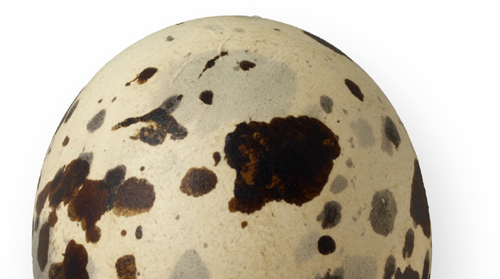
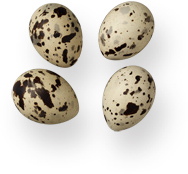
Clutch

CHARADRIIFORMES
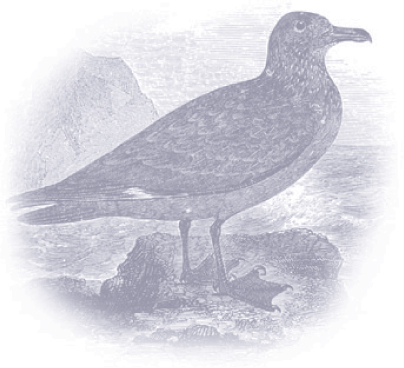
ADULT BIRD SIZE
19½–23 in (50–58 cm)
INCUBATION
29 days
CLUTCH SIZE
2 eggs

|
ORDER |
Charadriiformes |
|
FAMILY |
Stercorariidae |
|
BREEDING RANGE |
Northern European coast and islands |
|
BREEDING HABITAT |
Coastal moorlands and rocky islets |
|
NEST TYPE AND PLACEMENT |
Ground nest on rocky coast or in fields, lined with grasses |
|
CONSERVATION STATUS |
Least concern |
|
COLLECTION NO. |
FMNH 4369 |
The Great Skua is a large, bulky seabird, and it uses its size, rather than agility, to be successful on the breeding and wintering grounds. When it spots other birds—including gulls, terns, and even gannets—with freshly caught prey, it flies directly at them, pinches their wing in its beak, and follows the falling victim directly to the water, where it continues to attack it, until it regurgitates its prey. This advanced form of kleptoparasitism complements the other food sources of skuas, which typically include fish, the eggs and chicks of other birds, and rodents.
Individual Great Skuas may become specialists, feeding solely on stolen food or only on fish. Specialization seems to pay off for these individuals, compared to generalist feeders, because the specialists start nesting earlier in the season, lay larger eggs, and raise faster-growing chicks.
The egg of the Great Skua is olive brown in background and with slightly darker brown maculation, and is 2⅞ x 2 in (73 x 50 mm) in size. Parents vigorously defend their eggs or young, flying toward and directly confronting the approaching danger, including people, instead of trying to hide or lead the intruder away from the nest.

Clutch
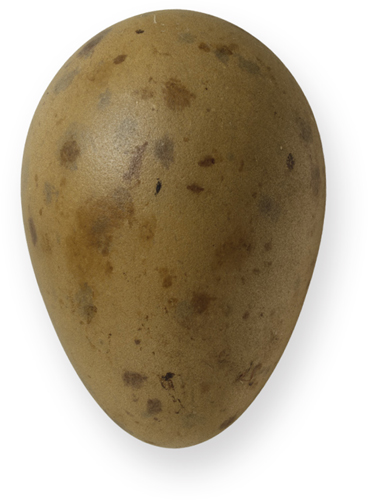
CHARADRIIFORMES

ADULT BIRD SIZE
15–23 in (38–58 cm)
INCUBATION
23–25 days
CLUTCH SIZE
2 eggs
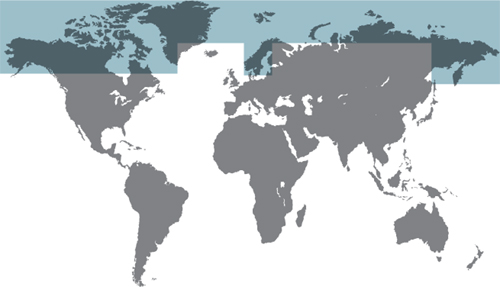
|
ORDER |
Charadriiformes |
|
FAMILY |
Stercorariidae |
|
BREEDING RANGE |
High Arctic of North America, Greenland, and Eurasia |
|
BREEDING HABITAT |
Dry, short grass or rocky tundra |
|
NEST TYPE AND PLACEMENT |
A shallow ground depression, often with pebbles |
|
CONSERVATION STATUS |
Least concern |
|
COLLECTION NO. |
FMNH 4391 |
Known as the Long-tailed Skua outside the Americas, this species is an active hunter of mammalian prey, including lemmings, in its Arctic breeding grounds; as the populations of lemmings fluctuate, so does the productivity of the jaegers’ breeding attempts. However, this species also will revert to its relatives’ most common foraging tactic: parasitism and stealing. By chasing after and outmaneuvering other seabirds, it catches their regurgitated prey, instead of spending prolonged periods fishing on its own.
The two eggs are incubated from the day on which each is laid, perhaps as a necessity to avoid dangerously low temperatures in the cool Arctic breeding grounds. Because the eggs may be laid several days apart, the chicks hatch asynchronously. Both parents incubate the eggs and attend the chicks, which are semi-precocial: they are downy and mobile soon after they hatch, but they require prey to be delivered and fed to them, in small morsels, by the parents during the first weeks of life.
The egg of the Long-tailed Jaeger is olive brown in coloration with dark brown maculation, and it measures 2⅛ x 1½ in (55 x 38 mm) in size. Although both parents incubate the eggs, the female does so more often and for longer periods than the male does.

Clutch

CHARADRIIFORMES

ADULT BIRD SIZE
15–17 in (38–43 cm)
INCUBATION
30 days
CLUTCH SIZE
1 egg

|
ORDER |
Charadriiformes |
|
FAMILY |
Alcidae |
|
BREEDING RANGE |
Coastlines of the northern Pacific and Atlantic Oceans |
|
BREEDING HABITAT |
Rocky cliffs or flat areas on rocky headlands and islands, in full ocean view |
|
NEST TYPE AND PLACEMENT |
No nest, egg is typically placed on bare, rocky ledges |
|
CONSERVATION STATUS |
Least concern |
|
COLLECTION NO. |
FMNH 4244 |
The Common Murre, also known as the Common Guillemot, breeds in colonies called “loomeries,” which are so densely packed that individuals are often able to reach and touch their neighbors. Without a distinct nest structure or spatial isolation, it is paramount that murre parents can recognize their own egg as they come and go from the colony. It appears that the immense variation in the background coloration of eggs and the distinctiveness of their maculation assist with individual egg recognition. Upon returning to incubate the egg, the parent carefully examines it, probably to ensure that it has the right markings.
In the absence of a protective nest, the shape of the Common Murre’s egg also functions to anchor it safely on the narrow cliff ledge where this bird breeds. Even when it is knocked by an adult taking flight, the egg rolls in a narrow circle back to its original position. The chick grows fast to fledge at just three weeks of age.
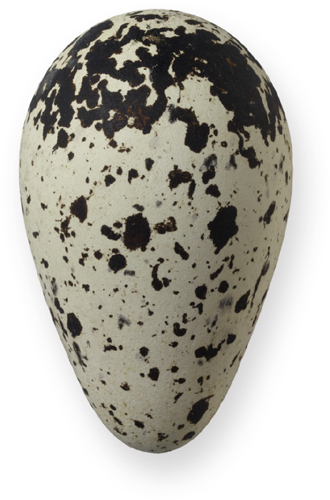
The egg of the Common Murre can be a wide range of shades of greenish blue in background color, with blackish brown markings, and measures 33∕16 x 2 in (81 x 50 mm) in size. Relative to body size, the egg is large and comprises 11 percent of the female’s body weight.
CHARADRIIFORMES
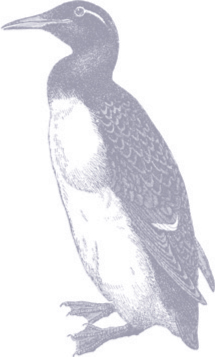
ADULT BIRD SIZE
17–17½ in (43–45 cm)
INCUBATION
31–34 days
CLUTCH SIZE
1 egg
|
ORDER |
Charadriiformes |
|
FAMILY |
Alcidae |
|
BREEDING RANGE |
Arctic and subarctic coastlines of North America and Eurasia |
|
BREEDING HABITAT |
Cliff faces on oceanic shores and islands |
|
NEST TYPE AND PLACEMENT |
No nest, egg is laid on bare rock of ledges on steep cliffs |
|
CONSERVATION STATUS |
Least concern |
|
COLLECTION NO. |
FMNH 4317 |
When breeding, these birds form vast colonies, occasionally of over a million individuals. The single chick grows fast and require lots of parental trips; with each trip the parent brings just one food item back in its beak. Older birds are more successful at feeding their chicks more often, and also learn to nest in the more central, safer parts of the colony. Thus, experience imparts greater fitness to breeding murres. These birds breed in the densest of colonies, with each incubating adult requiring less than a square foot (0.1 m2) of space.
Since hunting by humans led to the extinction of the flightless Great Auk (see here), the Thick-Billed Murre is the largest living species among all alcid seabirds. Although flighted, these murres spend most of their time at sea, diving and using their wings to propel themselves by essentially “flying underwater” in pursuit of fish prey.

The egg of the Thick-billed Murre is tan to dark green in color with black markings; it measures 3⅛ x 2 in (80 x 50 mm). The highly variable background color and maculation of the eggs ensures that each one is unique in appearance, meaning it can be recognized by its parents.
CHARADRIIFORMES
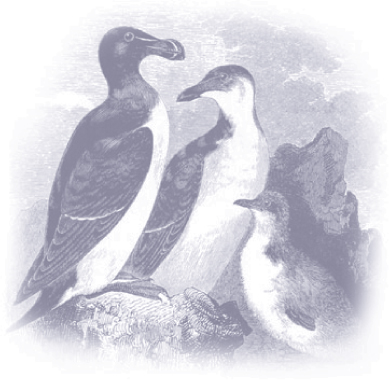
ADULT BIRD SIZE
15–17 in (38–43 cm)
INCUBATION
35 days
CLUTCH SIZE
1 egg
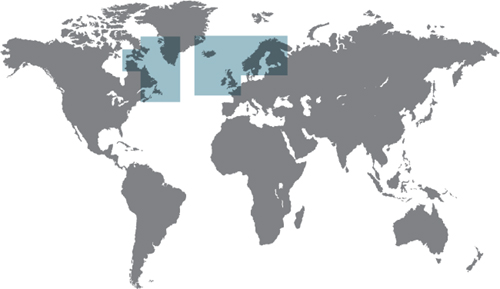
|
ORDER |
Charadriiformes |
|
FAMILY |
Alcidae |
|
BREEDING RANGE |
Subarctic and boreal waters on both coasts of the Atlantic Ocean |
|
BREEDING HABITAT |
Coastal areas off continental-shelf waters, near boulders and caves, or narrow cliff ledges |
|
NEST TYPE AND PLACEMENT |
Egg is laid on barren rock, or in shallow bowl of rocks, shells, feathers, and vegetation |
|
CONSERVATION STATUS |
Least concern |
|
COLLECTION NO. |
FMNH 4360 |
Compared to other birds, Razorbills plan for the long haul in their reproductive behaviors. Individuals do not breed until four to five years of age, and the female carefully chooses her social mate by approaching different males during their courtship displays, as if to incite them to compete for her favors. Once the pair bond is established, it is maintained for life. The birds return to the same breeding colony and the same nesting site, where they display and copulate for weeks before the single egg is laid.
Once the pair reaches older age, they may skip a breeding season between nesting attempts. Taking a season off ensures the parents are in better physical condition for the next breeding season. As she gets older, the female may copulate with several mates before laying her egg, to ensure that fertilization occurs. Previously exploited by hunters, today large nesting colonies are stable or even growing in size. The lifespan of this species is long, with the oldest recorded individual living for 42 years.
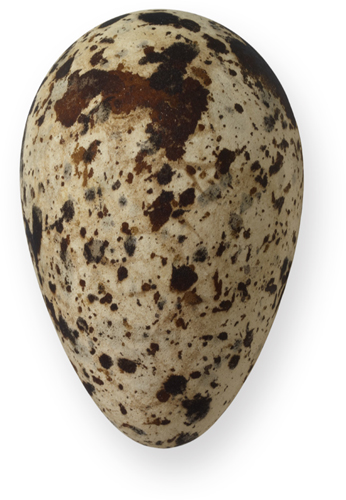
The egg of the Razorbill is white to reddish brown in background coloration, with darker brown spots around the blunt end. It measures 3 x 1⅞ in (76 x 48 mm) in size. The parents take turns to incubate the egg; those laid in crevices are more likely to survive attacks from predators than eggs on open cliffs.
CHARADRIIFORMES
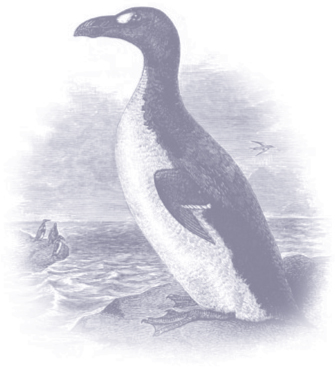
ADULT BIRD SIZE
30–33½ in (75–85 cm)
INCUBATION
42 days
CLUTCH SIZE
1 egg
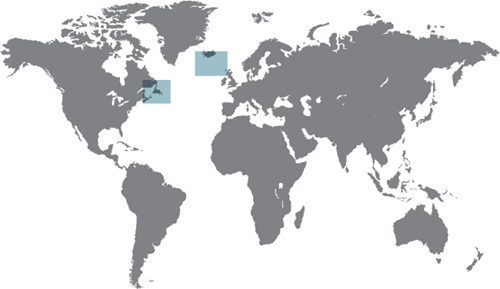
|
ORDER |
Charadriiformes |
|
FAMILY |
Alcidae |
|
BREEDING RANGE |
Cold, north Atlantic coastlines, both in Europe and North America |
|
BREEDING HABITAT |
Rocky, barren offshore islands |
|
NEST TYPE AND PLACEMENT |
Egg laid directly on rock surface |
|
CONSERVATION STATUS |
Extinct |
|
COLLECTION NO. |
FMNH 2908 |
Great Auks were flightless, a trait they shared with other extinct species in the alcid family. However, the Great Auk’s closest relatives, the Razorbill (see here) and the Dovekie, can fly. This suggests that flightlessness evolved independently in both Great Auk and other extinct flightless alcids. The colonial and breeding behaviors of the species were similar to those of most other extant relatives, probably with a single monogamous pair incubating a single egg and raising the dependent chick within a large and densely packed breeding colony.
The Great Auk was the largest member of its family, and its colonial habits made it vulnerable to human exploitation through hunting, and predation by introduced rats and other predatory mammals on islands with long-standing colonies. The last individuals known to be nesting were killed in 1844. The species has never been studied by a trained scientist; knowledge of the Great Auk’s behavior has been distilled from native people’s legends and whalers’ accounts.

The egg of the Great Auk was white with a bluish tint, and patterned with dark brown blotches and streaks. It measured 4¾ x 3 in (120 x 75 mm). Fewer than 100 eggs of the Great Auk remain, and so most collections obtain a handpainted, realistic cast for their display, as shown below.
CHARADRIIFORMES

ADULT BIRD SIZE
12–14 in (30–35 cm)
INCUBATION
30–32 days
CLUTCH SIZE
1–2 eggs

|
ORDER |
Charadriiformes |
|
FAMILY |
Alcidae |
|
BREEDING RANGE |
North Pacific Ocean, along both Asian and North American coasts |
|
BREEDING HABITAT |
Rocky shores, cliffs, and islands |
|
NEST TYPE AND PLACEMENT |
Shallow scrape in soil or gravel, inside a cavity or boulder cavity |
|
CONSERVATION STATUS |
Least concern |
|
COLLECTION NO. |
FMNH 4215 |
Pigeon Guillemot pairs maintain bonds across years, with the mates reestablishing their ties using visual, tactile, and vocal displays in the waters near the colony each season. Both parents incubate the egg(s) and feed the chick(s) whole fish, starting with small ones and increasing the size as the young grow. The juveniles, still flightless, leave the nest on their own and flutter to the sea, where they dive for food unassisted, until they are ready to fly to offshore fishing grounds two weeks later.
The Pigeon Guillemot, a handsome, mostly black seabird with prominently red feet, spends most of its life at sea, coming to land only to nest and to raise the young. It is a loosely colonial species, with breeding aggregations ranging from a couple of pairs to hundreds. Adults can hop and crawl high onto near-vertical cliff faces to reach their nesting crevice, using their clawed webbed feet and intensive wing-flapping.
The egg of the Pigeon Guillemot is greenish to bluish cream in background color and has dark brown to black and lavender blotches; it measures 2⅜ x 1⅝ in (60 x 41 mm) in size. Where each egg hatches is important, because the adult birds return to their own natal colony for breeding.
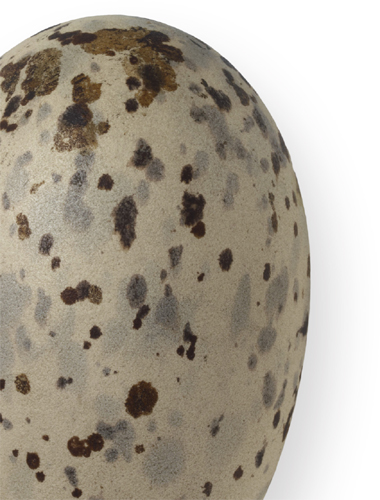

Clutch

CHARADRIIFORMES
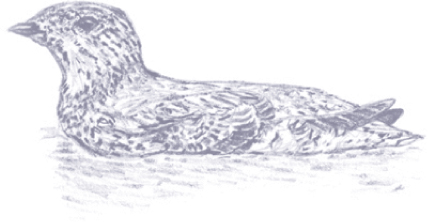
ADULT BIRD SIZE
7½–9 in (19–23 cm)
INCUBATION
Unknown (!), estimated at 30 days
CLUTCH SIZE
1 egg

|
ORDER |
Charadriiformes |
|
FAMILY |
Alcidae |
|
BREEDING RANGE |
Alaska, possibly also eastern Siberia |
|
BREEDING HABITAT |
Inland, mountain-top slopes, above the tree line |
|
NEST TYPE AND PLACEMENT |
Egg laid on barren ground or in crevice, on south-facing slopes |
|
CONSERVATION STATUS |
Critically endangered |
|
COLLECTION NO. |
FMNH 18533 |
This murrelet is one of the rarest and least-known North American seabirds. Unusually for a seabird, it nests solitarily on high mountain tops inland from the Alaskan coastline, near glaciers and close to the snow line. The nesting grounds are remote and difficult to locate, so the breeding biology of the species is poorly known, including the duration of its incubation period. The chicks are covered in a dense and warm down layer until just before departing the nesting site to protect them from the high elevation and exposed position of the breeding sites. We have yet to discover how the fledglings make their way to the coastal waters after the adults cease parental care.
Ongoing habitat changes, including the retreat of glaciers near the breeding grounds and at sea level where the adults forage, have paralleled a dramatic decrease in the population sizes of this species. Most of the monitored nesting localities have seen a 30–80 percent decline in breeding pair numbers over the last two decades. It is also estimated that 5–15 percent of the global population was killed off in the Exxon Valdez oil spill in 1989.

The egg of the Kittlitz’s Murrelet is pale olive to olive green in background color with brown maculation, and it measures 2⅜ x 17∕16 in (60 x 37 mm) in size. Typical maculation for this species consists of small speckles, larger spots, and thin scrawls, especially near the blunt end of the egg. This specimen from the Field Museum, collected in 1886 from the Aleutian Islands, represents an unusual record for the species in that it is immaculate.
CHARADRIIFORMES
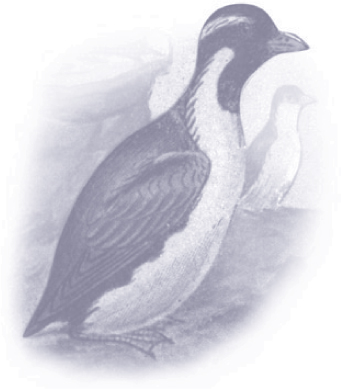
ADULT BIRD SIZE
8–9½ in (20–24 cm)
INCUBATION
23–36 days
CLUTCH SIZE
1–2 eggs
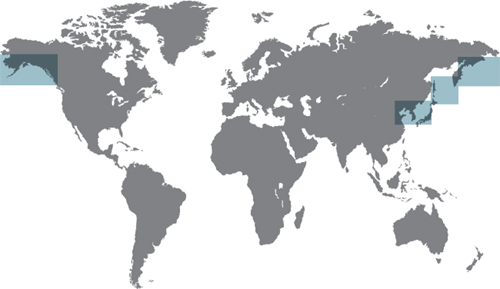
|
ORDER |
Charadriiformes |
|
FAMILY |
Alcidae |
|
BREEDING RANGE |
Northern Pacific coastline, both in Asia and in North America |
|
BREEDING HABITAT |
Rock outcrops and grassy patches on islands |
|
NEST TYPE AND PLACEMENT |
Along rocky seacoasts in crevices, under rocks, and in burrows in the ground |
|
CONSERVATION STATUS |
Least concern, but locally a species of “special concern” |
|
COLLECTION NO. |
FMNH 4174 |
Ancient Murrelets are small seabirds and, while incubating, arrive and depart their burrow-nest under darkness, presumably to avoid predators. The parents do not feed their young in the nest chambers, perhaps to reduce exposure to land-dwelling predators. Instead they leave the nest and fly toward the ocean shore, calling repeatedly to lead the chicks to the sea. Under the cover of the night sky, the one-to-three-day-old chicks crawl out of the burrows and head to the shore. Once in the water, the families locate their members by their calls, and then directly swim offshore for at least 12 more hours. The chicks are then fed in the open ocean by the parents for a month or more, until they can feed and fly on their own.
The burrow-nests of Ancient Murrelets make them vulnerable to mammalian predators, including foxes and raccoons. Invasion of colony islands by these predators is frequent, requiring continued conservation monitoring effort, and repeated mammal-removal programs, to ensure these birds’ breeding success in the long run.
The egg of the Ancient Murrelet is pale green in coloration, with light and dark brown maculation; it measures 2⅓ x 1½ in (59 x 38 mm) in size. Occasionally, 3–4 eggs are found together, but the differences in the maculation suggest that these clutches are the product of two or more females laying together.
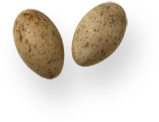
Clutch

CHARADRIIFORMES
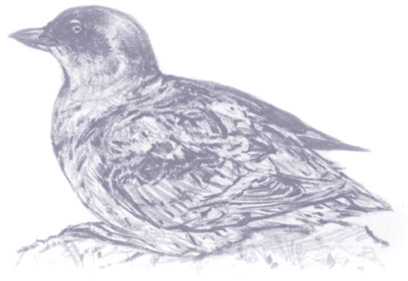
ADULT BIRD SIZE
8–9 in (20–23 cm)
INCUBATION
40 days
CLUTCH SIZE
1 egg
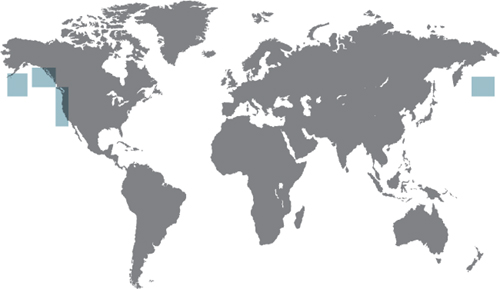
|
ORDER |
Charadriiformes |
|
FAMILY |
Alcidae |
|
BREEDING RANGE |
Pacific coastline of temperate and Arctic North America |
|
BREEDING HABITAT |
Offshore islands |
|
NEST TYPE AND PLACEMENT |
Short burrows in the ground, also crevices and holes in buildings |
|
CONSERVATION STATUS |
Least concern |
|
COLLECTION NO. |
FMNH 4165 |
The Cassin’s Auklet, another diminutive seabird, is unusual among its relatives in that adults maintain the same dark head plumes throughout the year, instead of molting into an ornamental, nuptial plumage prior to mating. In fact, individuals from some southern populations remain around the nesting colony all year round, instead of moving offshore to spend the non-breeding season on the open sea.
Breeding is a well-coordinated cooperative affair between the female and the male; the mates take turns in incubating the egg, changing guard every three days or so, typically during the nighttime. The Cassin’s Auklet is one of the few alcids that can complete two nesting attempts per breeding season, especially in the southern populations. To feed the young, parents provide the chick with nutrient-rich half-digested krill and other planktonic prey items, stored and transported in a special gular pouch, just under the tongue.
The egg of the Cassin’s Auklet is white or whitish green in background color, immaculate, and 1¾ x 1¼ in (44 x 32 mm) in size. The eggs are variable in size, and quickly become darker grey or soiled as incubation progresses.
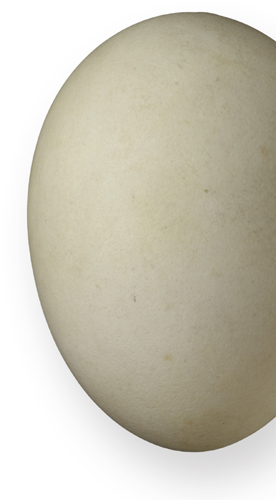
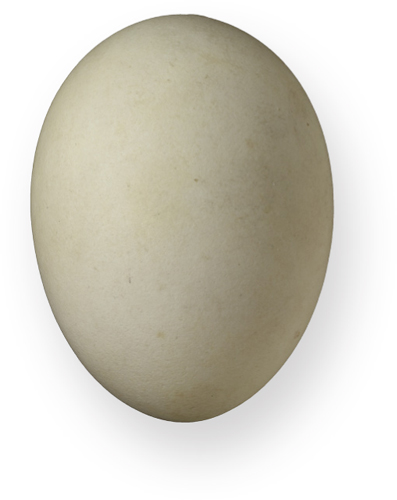
CHARADRIIFORMES

ADULT BIRD SIZE
9–10 in (23–26 cm)
INCUBATION
35–36 days
CLUTCH SIZE
1 egg

|
ORDER |
Charadriiformes |
|
FAMILY |
Alcidae |
|
BREEDING RANGE |
Arctic Pacific coasts and islands off North America and Asia |
|
BREEDING HABITAT |
Rocky cliffs on the mainland and islands |
|
NEST TYPE AND PLACEMENT |
Bare ground in rock crevices, or in burrows |
|
CONSERVATION STATUS |
Least concern |
|
COLLECTION NO. |
FMNH 1938 |
Parakeet Auklets are dedicated parents during the breeding season, with both sexes equitably sharing incubation of the egg and provisioning of the nestling. Once the chick can fly, the parents stop feeding it. The weight profile of the chick reflects this parental strategy: first the chick grows rapidly, even surpassing the mass of its parents. Once the adults stop provisioning, the chick loses weight and departs the nest, flying toward the open ocean soon afterwards.
This auklet is a specialist of the Arctic seas in the north Pacific Ocean; it winters at sea, foraging on invertebrate zooplankton by diving to depths of 100 ft (30 m), and only returns to land to nest and breed. Its unusual, tubular beak is probably an adaptation to handle soft gelatinous prey, including jellyfish.
The egg of the Parakeet Auklet is chalk white to bluish white in background color, has no speckling, and measures 2⅛ x 1½ in (54 x 37 mm) in size. The parents take turns to incubate the egg, typically spending one day at sea, followed by a day in the nest chamber.

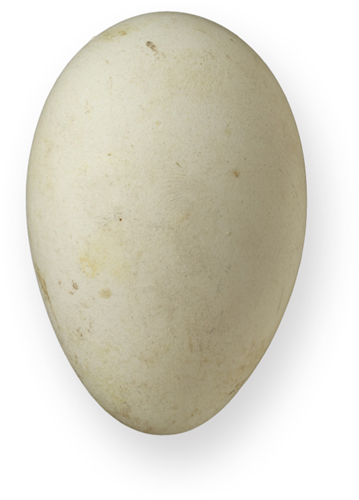
CHARADRIIFORMES
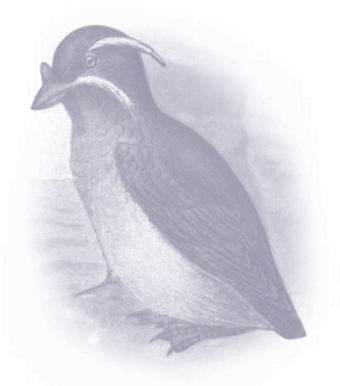
ADULT BIRD SIZE
11–11½ in (28–29cm)
INCUBATION
39–52 days
CLUTCH SIZE
1 egg
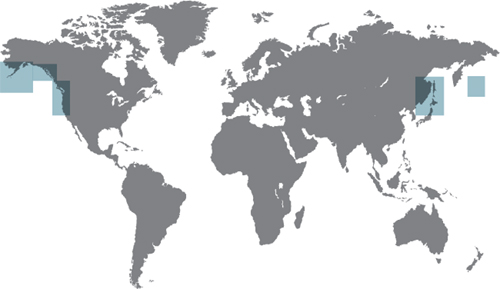
|
ORDER |
Charadriiformes |
|
FAMILY |
Alcidae |
|
BREEDING RANGE |
Arctic and temperate north Pacific Ocean, islands along both North American and Asian coastlines |
|
BREEDING HABITAT |
Grassy fields sloping toward the open ocean, also rocky outcroppings |
|
NEST TYPE AND PLACEMENT |
Digs its own ground burrows or uses rock crevices |
|
CONSERVATION STATUS |
Least concern |
|
COLLECTION NO. |
FMNH 4160 |
This species is named after the horn-like vertical white sheath at the base of its beak, which is displayed only during the breeding season. It nests on remote islands in both forested and grassy habitats, in colonies of thousands of individuals. When it digs its own burrow in the soil, this can be long, with several forks and dead-ends, before reaching the nesting chamber. The chick is semiprecocial, covered in down and can readily walk; yet it remains in the nest for over a month and a half. During this time the adults arrive and depart under cover of darkness. This reduces both predation on the adults as well as kleptoparasitism by large gulls who try to steal the fish adult auklets bring back to feed their nestling.
Despite being called an auklet, this species resembles the puffins in appearance, behavior, and DNA. For example, it typically lines up several fish prey items in its beak before flying back to the colony to feed the nestling, a behavior more akin to puffins than other auklets. Returning with more than one prey item is important for these birds, because their feeding sites can be up to 30 miles (50 km) away from the breeding site.
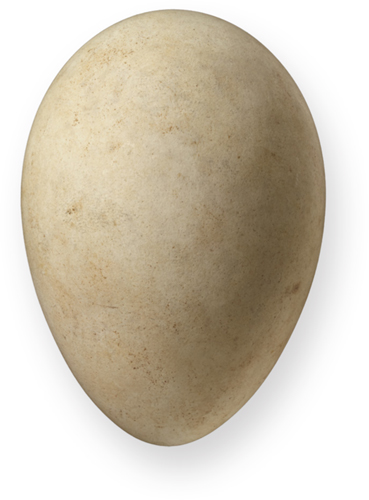
The egg of the Rhinoceros Auklet is off-white in background color, immaculate, and 2¾ x 1¾ in (69 x 46 mm) in size. On several islands without large colonies of gulls, the parents attend the nest throughout all hours of the day, to reduce the risk of losing their egg to avian nest predators.
CHARADRIIFORMES
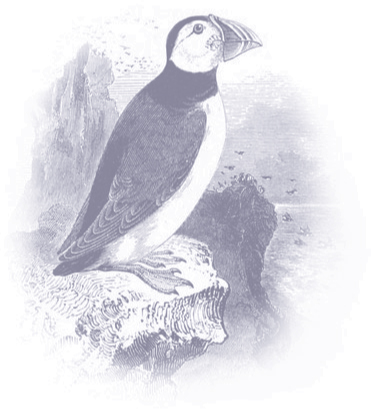
ADULT BIRD SIZE
10–11½ in (26–29 cm)
INCUBATION
39–45 days
CLUTCH SIZE
1 egg

|
ORDER |
Charadriiformes |
|
FAMILY |
Alcidae |
|
BREEDING RANGE |
North Atlantic coasts and islands off Europe, Greenland, and North America |
|
BREEDING HABITAT |
Rocky seacoasts with cliff faces and grassy fields |
|
NEST TYPE AND PLACEMENT |
Excavated burrows in grassy slopes facing the ocean, occasionally in rocky crevices |
|
CONSERVATION STATUS |
Least concern |
|
COLLECTION NO. |
FMNH 4126 |
Atlantic Puffins breed in large colonies, often mixed with other seabirds, and frequently on offshore islands unreachable by land mammals. It takes four to five years for a puffin to sexually mature, and then it begins breeding by establishing a pair bond which lasts across several breeding seasons. The male is larger, more boldly colored, and invests more heavily in excavating the nesting burrow, but both sexes take turns incubating the egg and provisioning the chick. After the nestling departs the burrow, it heads directly to sea, where the parents continue to feed it until it reaches independence.
When swimming in the ocean, the Atlantic Puffin, also known as the Common Puffin, displays the most conspicuous of its traits, the boldly patterned head plumes and the colorful beak. This allows for a suite of social and reproductive decisions to be undertaken in the water, including both pair bonding and mating. These birds only truly return to land to nest.
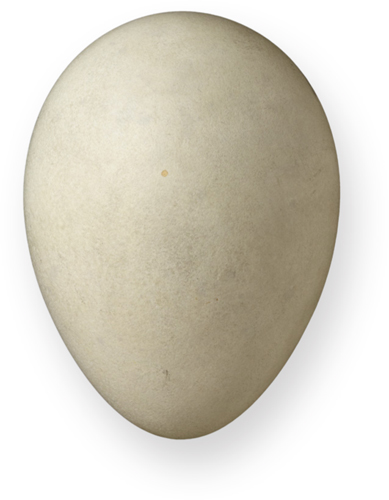
The egg of the Atlantic Puffin is white with a green or beige tint in background color; it has brown maculation, and measures 2½ x 1¾ in (63 x 45 mm) in size. The most common predators of puffin eggs are other birds, including large gulls and skuas.
CHARADRIIFORMES
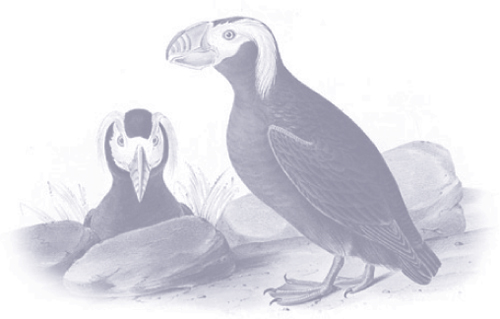
ADULT BIRD SIZE
14–15½ in (36-40 cm)
INCUBATION
45 days
CLUTCH SIZE
1 egg
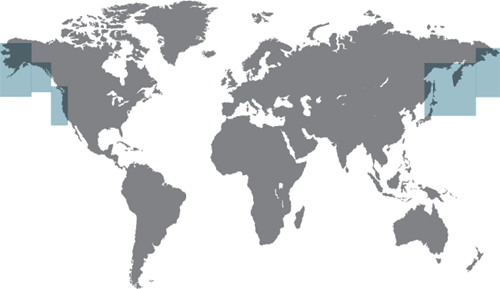
|
ORDER |
Charadriiformes |
|
FAMILY |
Alcidae |
|
BREEDING RANGE |
Isolated islands in the north Pacific of North America and Asia |
|
BREEDING HABITAT |
Coastal slopes, vegetation, and rocky outcroppings |
|
NEST TYPE AND PLACEMENT |
Simple burrow or a crevice between rocks, well lined with plant materials and feathers |
|
CONSERVATION STATUS |
Least concern |
|
COLLECTION NO. |
FMNH 2980 |
The Tufted (or Crested) Puffin is a uniquely colored seabird that breeds in dense colonies on offshore locations. The single egg is incubated by both parents taking turns, and the pair also cooperate in provisioning the nestling. It takes a lot to feed the fast-growing chick, and puffin parents are often seen to return to the breeding colony with several intact fish lodged between their mandibles.
This puffin is the preferred prey species for Arctic Foxes, even when nesting in large, mixed-species breeding aggregations. To escape this predation, the puffins dig nesting burrows or select crevices that are especially hard to approach from land. The strategy also makes the species hard for researchers and conservation managers to monitor. Nesting habitat protection, including the removal of mammalian invaders on the few islands where the largest colonies are established, is a conservation priority to maintain puffin populations.

The egg of the Tufted Puffin is off-white in background color, immaculate, and 2¾ x 1⅞ in (72 x 48 mm) in size. Nesting on steep slopes and rock faces, and on remote islands, allows these puffins, and their eggs, to foil the attempts of many of their mammalian predators.
LARGE NON-PASSERINE LAND BIRDS

This chapter starts with ancient flightless land birds (ostriches, emus, rheas, and kiwis; collectively called ratites) and their relatives, the flighted tinamous; included are also the birds of prey, the gamebirds, the parrots, and the hornbills. Ratites and tinamous are restricted largely to the southern hemisphere, but hawks and eagles, owls as well as pheasants, grouse and ptarmigan have adapted well to living on most continents throughout the seasons, including the cold northern hemisphere winters. The eggs of these birds vary in size and shape, as does the size of a clutch. The large flightless birds, tinamous, and gamebirds produce precocial young that are ready to leave the nest soon after hatching; most of these nest and feed on the ground. In contrast, the birds of prey, parrots, and hornbills often build nests high above the ground and produce altricial young that rely on the parents to secure food for them during development.
STRUTHIONIFORMES
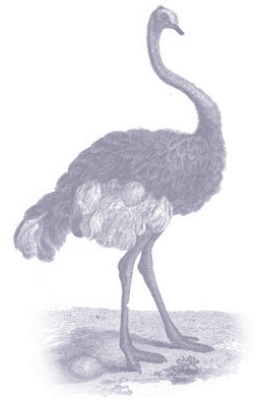
ADULT BIRD SIZE
6 ft 10 in–8 ft 10 in (2.1–2.7 m)
INCUBATION
35–45 days
CLUTCH SIZE
10–12 eggs per female; 20 eggs on average per nest
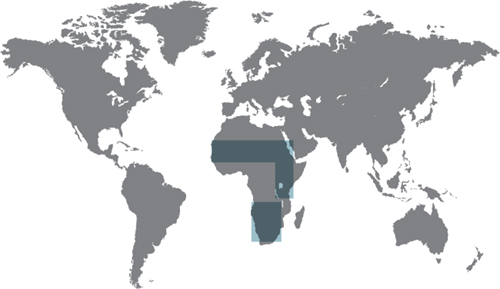
|
ORDER |
Struthioniformes |
|
FAMILY |
Struthionidae |
|
BREEDING RANGE |
Sub-Saharan Africa, recently extinct from the Arabian peninsula |
|
BREEDING HABITAT |
Desert, short grassland, savanna |
|
NEST TYPE AND PLACEMENT |
Simple, shallow pit in the ground |
|
CONSERVATION STATUS |
Least concern |
|
COLLECTION NO. |
FMNH 2195 |
The Ostrich is well known for the distinction between the sexes both in terms of plumage and behavior: the males’ black-and-white plumes once were highly sought after by people as fashion and clothing accessories. The male incubates the eggs at night, when its plumage patterns provide for strong camouflage. In turn, the female’s brown-gray plumage allows her to be cryptic while sitting on the eggs during the day.
Nesting is a communal affair in ostriches; several females lay in the same nest. But when egg laying is complete, the dominant female culls some of the eggs by moving them out of the nest scrape, to reduce the clutch size to a manageable 20 or so eggs. These are incubated by her and a single male. The Ostrich is the largest of all living birds, and hence, when first fertilized, the egg is the largest single cell on earth.
The egg of the Ostrich is off-white to cream in background color and immaculate with a glossy sheen. It measures 7 x 5½ in (178 x 140 mm) in size. When the eggs are exposed to direct sun, their thick shell and pale color screen the embryo from harmful ultraviolet radiation.

Clutch
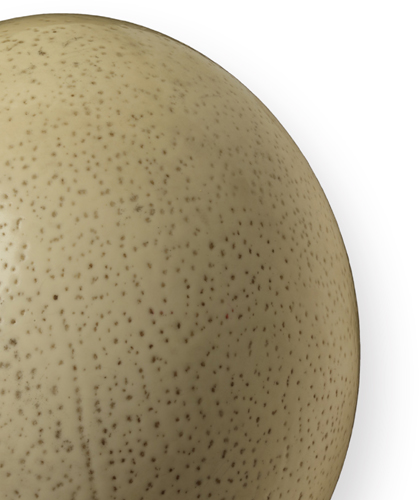
RHEIFORMES
ADULT BIRD SIZE
35½–59 in (90–150 cm)
INCUBATION
29–43 days
CLUTCH SIZE
5–10 eggs per female, 26 eggs on average per nest
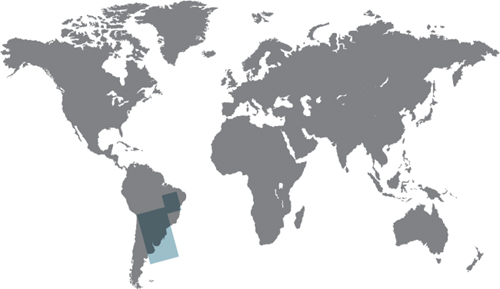
|
ORDER |
Rheiformes |
|
FAMILY |
Rheidae |
|
BREEDING RANGE |
Subtropical and temperate eastern South America; a self-sustaining feral population is now established in Germany |
|
BREEDING HABITAT |
Grasslands and pastures |
|
NEST TYPE AND PLACEMENT |
Shallow ground scrape, with the ground cleared of sticks and branches around it |
|
CONSERVATION STATUS |
Near threatened |
|
COLLECTION NO. |
FMNH 21156 |
The social structure of Greater Rhea communities follows a strong seasonal pattern; in the winter, flocks of adults of both sexes and varied ages are maintained. As the spring approaches, the males become increasingly aggressive and solitary, while the females break off into small groups.
Greater Rhea males court and mate with several females in a flock, and often remain in the vicinity of their eventual nesting site. In contrast, after flocks of females mate with a male, they often move between the distant nesting sites of several different males. The eggs are also laid by many females in each nest, on different days: up to 80 eggs have been counted in a single nest. As they develop, the chicks call to others from inside the egg, and through this communication, and a flexible incubation period, the eggs end up hatching within two days of each other, even if they have been laid nearly two weeks apart.
The egg of the Greater Rhea is greenish to bluish yellow, and fades to dull cream in background color when exposed to light. It is immaculate, and measures 5⅛ x 3½ in (130 x 90 mm) in dimensions.
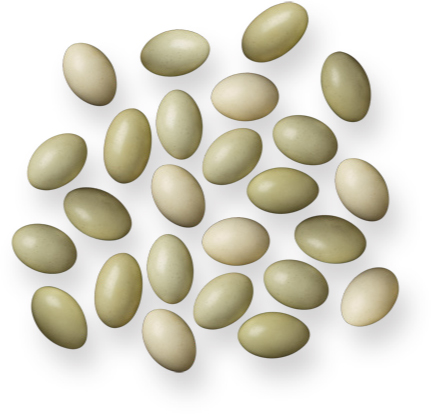
Clutch

CASUARIIFORMES
ADULT BIRD SIZE
4 ft 3 in–5 ft 7 in (1.3–1.7 m)
INCUBATION
50 days
CLUTCH SIZE
3–5 eggs

|
ORDER |
Casuariiformes |
|
FAMILY |
Casuariidae |
|
BREEDING RANGE |
Northeastern Australia, New Guinea, and nearby Indonesian islands |
|
BREEDING HABITAT |
Lowland rainforests |
|
NEST TYPE AND PLACEMENT |
Large ground nest built up from leaves, twigs, and other plant materials |
|
CONSERVATION STATUS |
Vulnerable |
|
COLLECTION NO. |
FMNH 2203 |
The Southern Cassowary is the largest of the three extant cassowary species, and, by weight, it is the second largest living bird species, second only to the Ostrich (see here). The female is larger and brighter than the male, and she is also more dominant in territorial disputes between neighbors. Yet it is the father who becomes a true threat to people during the breeding season; he alone incubates the eggs and attends the young. When threatened, he storms and uses his sharp inner toe-claws to kick up and slice through the enemy’s skin and flesh.
The Southern Cassowary is conspicuously colored when viewed in a zoo or encountered at one of several camping grounds in tropical Queensland, Australia, where it has become tame. Yet, in the low light of its native dense rainforest, its black plumage, grayish casque on the top of the head, and blue-red wattle hanging below, appear more cryptic than contrasting.
The egg of the Southern Cassowary is pale green in background color, and measures 5½ x 3¾ in (139 x 95 mm) in size. The nest is a built-up mattress, which allows moisture to drain away and so keeps the eggs dry after the frequent heavy rainfalls.
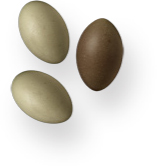
Clutch

CASUARIIFORMES
ADULT BIRD SIZE
4 ft 7 in–5 ft 3 in (1.4–1.6 m)
INCUBATION
56 days
CLUTCH SIZE
11–20 eggs

|
ORDER |
Casuariiformes |
|
FAMILY |
Dromaiidae |
|
BREEDING RANGE |
Australia |
|
BREEDING HABITAT |
Forests, wooded savanna, and grassland; absent from rainforests and extremely arid lands |
|
NEST TYPE AND PLACEMENT |
Shallow depression in the ground, lined with leaves, twigs, bark, and grass |
|
CONSERVATION STATUS |
Least concern |
|
COLLECTION NO. |
FMNH 2955 |
Emus have well-defined parental roles. Females range widely while males undertake all the incubation. Remaining on the nest for almost the full 24 hours of each day, the male rises only to turn the eggs; eating and drinking nothing, he can lose up to 20 percent of his body weight before the eggs hatch. The male also tends the chicks on his own. Females often mate with more than one male; the eggs in a single nest may derive from multiple mothers and fathers.
Although common throughout Australia, some Emu populations are at risk locally from hunting and nest predation. Several island populations have now become extinct, following the fate of other large flightless ratites on islands, among them the great Elephantbirds of Madagascar (see here) and the Moas of New Zealand.
The egg of the Emu looks like an avocado, dark green in color with a rough surface texture. The oval eggs are 6 x 3½ in (150 x 90 cm) in size, which is 10–12 times larger than a hen’s egg. They make a nutritious meal for predators and, when sourced from emu farms, for people too.
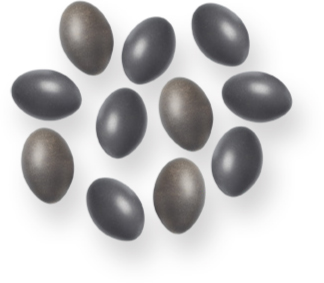
Clutch
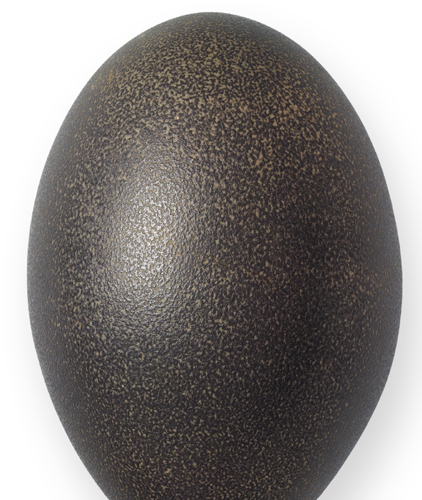
APTERYGIFORMES
ADULT BIRD SIZE
18–22 in (45–55 cm)
INCUBATION
74–84 days
CLUTCH SIZE
1–2 eggs
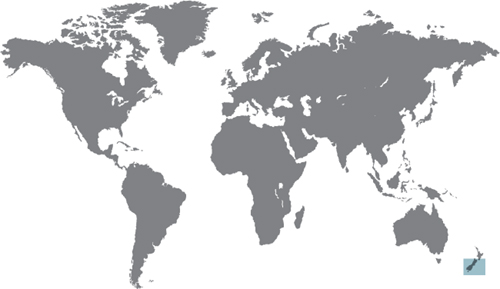
|
ORDER |
Apterygiformes |
|
FAMILY |
Apterygidae |
|
BREEDING RANGE |
New Zealand |
|
BREEDING HABITAT |
Forest understory |
|
NEST TYPE AND PLACEMENT |
Underground burrows below vegetation or between rootlets |
|
CONSERVATION STATUS |
Vulnerable |
|
COLLECTION NO. |
FMNH 22383 |
The female Southern Brown Kiwi invests nearly 40 percent of her body weight into laying the immense, single egg. It is no surprise that she takes several weeks if she lays a second egg. In turn, mostly the male is in charge of incubating the egg(s). Adult kiwis can successfully defend themselves and their eggs against stoats and rats, but the hatchlings are vulnerable until they reach about 26 oz (750 g) in weight. Therefore, when a kiwi’s nesting burrow is located, conservation managers typically collect the egg, and send it to be incubated artificially at one of several captive hatching facilities in New Zealand.
On Stewart Island, where its population densities have remained high, these typically nocturnal birds frequently forage during daytime hours, too. Still, as a species, it suffers from the same fate and population trend as all other kiwis: its numbers are dwindling as introduced mammals devastate the native flora and fauna in New Zealand. Conservation biologists predict its swift demise unless rapid nationwide protective actions are taken.
The egg of the Southern Brown Kiwi is white to beige, with a bluish tint, and clear of spots. It measures 4¾ x 3⅛ in (120 x 80 mm) in size. The kiwi egg is nearly as large as a single rhea or six hen eggs, yet its shell is thin; not much thicker than the chicken egg.
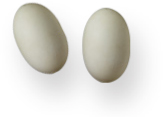
Clutch

AEPYORNITHIFORMES

ADULT BIRD SIZE
10 ft (3 m) or greater in height
INCUBATION
Unknown
CLUTCH SIZE
Unknown

|
ORDER |
Aepyornithiformes |
|
FAMILY |
Aepyornithidae |
|
BREEDING RANGE |
Madagascar |
|
BREEDING HABITAT |
Probably in wet forests, with fruit-bearing trees and bushes |
|
NEST TYPE AND PLACEMENT |
Unknown; eggshells are found buried in the sand on beaches, dunes, and river banks |
|
CONSERVATION STATUS |
Extinct |
|
COLLECTION NO. |
FMNH P14545 |
Elephantbirds belong to an ancient group of flightless birds, called ratites, which also includes ostriches, rheas, emus, and kiwis. Elephantbirds were the tallest and some of the heaviest birds known to walk the Earth: perhaps only one of the now extinct emu relatives in Australia weighed as much as the largest elephantbird.
These giants were once common and hunted by local people in Madagascar. Even early European visitors and colonists had the chance to sight them, observers including Marco Polo in the twelfth century, and the seventeenth-century French governor of the island nation. However, these observations recorded little with respect to the breeding, social, and foraging behaviors of elephantbirds. The last of the species died out soon afterward, around the end of the seventeenth century or early eighteenth century, probably due to a combination of hunting pressure and habitat changes brought about by humans.

The egg of the Great Elephantbird was off white to peach in background color, and measured 13½ x 9½ in (342 mm x 241 mm) in size; this equals 100–150 chicken eggs in volume. The specimen shown here is a rare whole sub-fossil egg from the Field Museum’s paleontology collection.
TINAMIFORMES

ADULT BIRD SIZE
15½–18 in (40–46 cm)
INCUBATION
Unknown
CLUTCH SIZE
2+ eggs
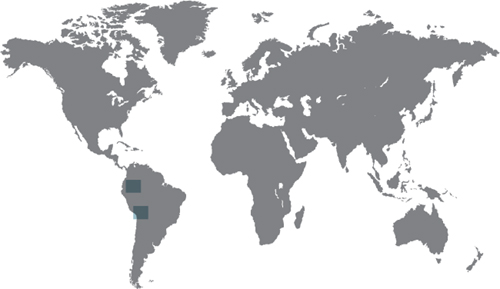
|
ORDER |
Tinamiformes |
|
FAMILY |
Tinamidae |
|
BREEDING RANGE |
Disjunct populations along the Andes, South America |
|
BREEDING HABITAT |
Humid low- and mid-elevation forests |
|
NEST TYPE AND PLACEMENT |
Leafy depression at the base of a tree |
|
CONSERVATION STATUS |
Vulnerable |
|
COLLECTION NO. |
FMNH 2856 |
While all tinamous are secretive, when it comes to the Black Tinamou, scientists and conservation managers have discovered very little about this species. This may be due to its disjointed distributional range in the montane forests of the Andes. Few eggs and nests have ever been seen in nature, and none has been monitored, and so hardly anything is known about the breeding biology of this species.
It is suspected that the small and distant breeding populations in Colombia and in Peru represent a recent restriction in the overall distribution of the species, due to ongoing hunting and extensive deforestation. However, with advances in remote monitoring, using nighttime motion-activated cameras, recent discoveries have also placed this species in eastern Ecuador, implying a more continuous distribution prime for new discoveries and future studies.
The egg of the Black Tinamou is glossy blue in background color and free of speckling, and 2½ x 2⅓ in (64 x 59 mm) in size. The egg shown here was reconstructed from a broken egg sample housed in the Field Museum’s collection, one of the few such samples known.

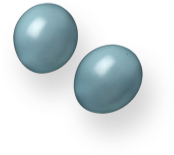
Clutch

TINAMIFORMES

ADULT BIRD SIZE
15½–17½ in (40–45 cm)
INCUBATION
19–20 days
CLUTCH SIZE
3–5

|
ORDER |
Tinamiformes |
|
FAMILY |
Tinamidae |
|
BREEDING RANGE |
Central America and tropical South America |
|
BREEDING HABITAT |
Humid to dry forests, including rainforests, cloud forests, and dry seasonal woodlands |
|
NEST TYPE AND PLACEMENT |
Scraped ground nest between tree buttresses |
|
CONSERVATION STATUS |
Near threatened |
|
COLLECTION NO. |
FMNH 2474 |
Tinamous lay the most brilliantly colored eggs of all birds and the Great Tinamou lays some of the brightest eggs among its relatives. Together with the ratites, tinamous belong to the ancient group of birds called paleognaths. Scientists used to think that the color of the ancestral bird egg might have been the pure white color of the calcite (CaCO3) which makes up the avian eggshell matrix. However, the colorful eggs of the ratites and tinamous may contradict this theory.
How can the conspicuous blue egg of the Great Tinamou survive in the predator-rich tropical habitats? The answer may lie in the intensity of paternal care. Females move in groups and lay eggs into several nests, while the male dedicates all his time to incubating a set of eggs, hiding them underneath his own cryptic plumage. The male sits so tightly on the nest that a researcher can pluck one of his feathers for paternity tests before he flushes off the nest.
The egg of the Great Tinamou is glossy turquoise in background color and clear of speckles. It measures 2¼ x 1⅞ in (58 x 48 mm) in size. The eggs, incubated atop the wet leaf litter on the forest floor, can become soiled prior to hatching, as seen in this museum specimen.


Clutch

TINAMIFORMES

ADULT BIRD SIZE
8½ –9½ in (22–24 cm)
INCUBATION
16–19 days
CLUTCH SIZE
1–2 eggs

|
ORDER |
Tinamiformes |
|
FAMILY |
Tinamidae |
|
BREEDING RANGE |
Central America and northern South America |
|
BREEDING HABITAT |
Lowland humid forests, riparian corridors, and shrubland |
|
NEST TYPE AND PLACEMENT |
Small depression in forest floor, often near the base of a tree |
|
CONSERVATION STATUS |
Least concern |
|
COLLECTION NO. |
FMNH 2475 |
The Little Tinamou is a secretive ground-dwelling bird that can be easily confused with a quail or partridge in the forest understory. It is rarely seen, even though it often occurs near human settlements and in modified habitats. When it is sighted, it is typically on its own, irrespective of the season. This implies a solitary lifestyle for both the female and the male, and a lack of the female alliances observed in other tinamou species, where multiple females seek out males to lay eggs communally in the same nest.
In Costa Rica and Trinidad the species breeds all year round, yet little is known about its social, nesting, and parental behaviors. Only a single bird attends the nest, but no one has confirmed to date that it is the male, as found in most other tinamou species. The incubating adult sits so tightly on the nest that it can be touched with a stick, and even marked with a dab of paint for subsequent identification of the same individual from a distance.
The egg of the Little Tinamou is reddish clay or purplish drab in background color, and immaculate. It measures 1½ x 1 in (37 x 26 mm) in size. The small clutch size suggests that only a single female lays in the nest.
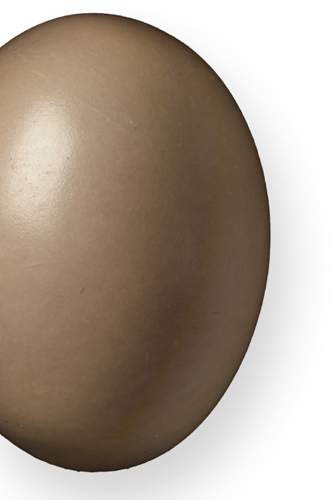

Clutch

TINAMIFORMES

ADULT BIRD SIZE
11–12 in (28–30 cm)
INCUBATION
17 days
CLUTCH SIZE
4–5 eggs

|
ORDER |
Tinamiformes |
|
FAMILY |
Tinamidae |
|
BREEDING RANGE |
Tropical and subtropical lowland South America |
|
BREEDING HABITAT |
Wooded habitats, from wet rainforest to seasonally dry cerrados |
|
NEST TYPE AND PLACEMENT |
Small depression in the ground |
|
CONSERVATION STATUS |
Least concern |
|
COLLECTION NO. |
FMNH 2200 |
The Undulated Tinamou lives in the dense understory of wet and dry forests, remaining hidden from the eyes of competitors and predators alike. It can occasionally be seen crossing clearings and roads that cut through these forests, but even then these birds quickly run away from approaching people and vehicles rather than taking flight.
The most conspicuous aspect of this species’ behavior is its incessant calling: two whistles followed by a raspy note. It can be heard repeatedly throughout all daylight hours. When mimicked by a playback or a whistle, the male can be attracted to the source; this suggests that these calls are used as male-to-male communication displays. However, the exact functions of the call, as well as many aspects of the behavior of this species, remain to be discovered.
The egg of the Undulated Tinamou is glossy reddish pink or light gray in background color, and free of maculation. It measures 2 x 1½ in (50 x 40 mm) in size. The male alone looks after the eggs and the chicks, relying on his rippled (“undulated”) plumage to remain cryptic and stay hidden from danger.

Clutch
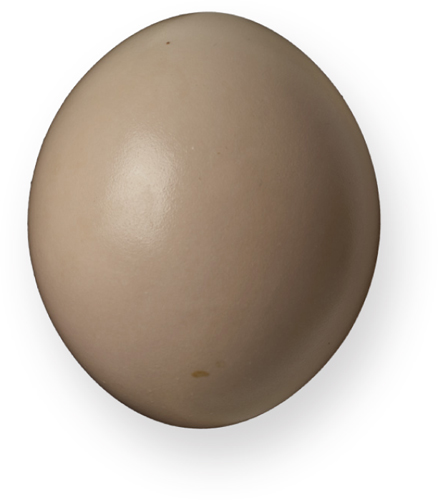
TINAMIFORMES
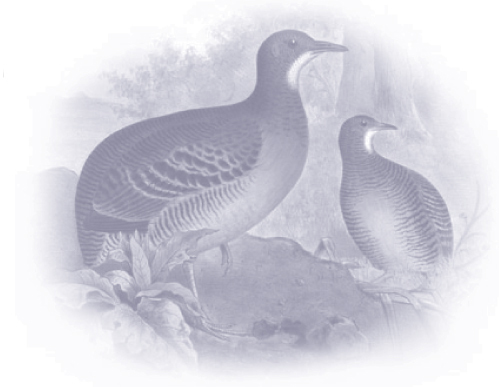
ADULT BIRD SIZE
10–12 in (25–30 cm)
INCUBATION
16 days
CLUTCH SIZE
2–3 eggs

|
ORDER |
Tinamiformes |
|
FAMILY |
Tinamidae |
|
BREEDING RANGE |
Subtropical and tropical Mexico, along both coastlines |
|
BREEDING HABITAT |
Moist lowland forests and secondary growths |
|
NEST TYPE AND PLACEMENT |
Shallow ground scrape |
|
CONSERVATION STATUS |
Least concern |
|
COLLECTION NO. |
FMNH 2153 |
The Thicket Tinamou is a relatively large, ground-dwelling bird. Its earth-toned plumage, and a habit of moving through the dense undergrowth of terrestrial bromeliads and sapling trees in the wet coastal forests, make it hard to spot. When approached by a potential threat, it prefers to run or freeze until it is safe to resume walking and feeding again.
This species’ presence becomes apparent during the breeding season, when the male needs to attract females for mating. He produces a hollow, two- or three-syllable-long whistle that concludes in an upward slur at the end of the calling bout. The simple, tonal quality of the call travels well in the dense forest, and it can be heard for long distances. This allows the female both to locate the source and assess the male’s potential as a mate. The nest may contain up to seven eggs, laid by several different females but always incubated by just one male.
The egg of the Thicket Tinamou is bronze purple to porcelain pink in background color, clear of spots, and 1½ x 1¼ in (40 x 33 mm) in dimensions.
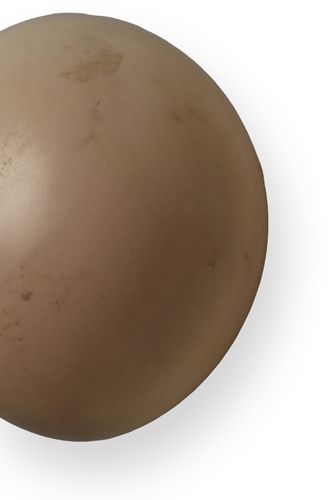
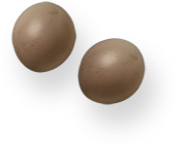
Clutch

TINAMIFORMES
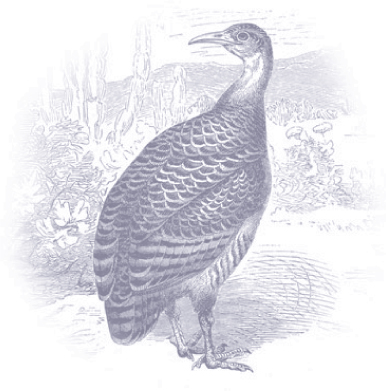
ADULT BIRD SIZE
15½–16 in (40–41 cm)
INCUBATION
19–21 days
CLUTCH SIZE
4–8 eggs

|
ORDER |
Tinamiformes |
|
FAMILY |
Tinamidae |
|
BREEDING RANGE |
Central and eastern South America |
|
BREEDING HABITAT |
Tropical, subtropical, and high-elevation grassland |
|
NEST TYPE AND PLACEMENT |
Simple scrape on ground |
|
CONSERVATION STATUS |
Least concern |
|
COLLECTION NO. |
FMNH 2466 |
The Red-winged Tinamou is a secretive bird, hiding and moving in dense grass fields. It only becomes conspicuous when it takes flight to escape predators. Unlike many other tinamous that are usually active at low light, this species is mostly on the move during the hottest hours in the middle of the day.
The female does not vocalize, but selects a male based on both his calls and his behaviors. Instead of drawing the female directly to the nest site, the male engages in a ritual called “forage-following,” which means that he trails behind the female as she seeks out seeds, insects, and fruits to feed on. When she shows interest in him, he leads her to the nest scrape, they mate, and she deposits an egg. She then moves on for good and he turns his attention to attract other females. The result is a clutch containing eggs laid by several different females. Only the male incubates the eggs and chaperones the chicks after they hatch. It is unclear, however, if the male actually fathers all the eggs that are laid in his nest.
The egg of the Red-winged Tinamou is red to purple in color, has no speckles, and is 2⅛ x 1⅝ in (55 x 41 mm) in size. It is covered by a bright glaze, almost resembling the texture and color of a painted or ceramic Easter egg.
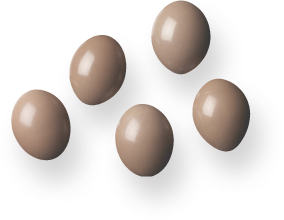
Clutch

TINAMIFORMES
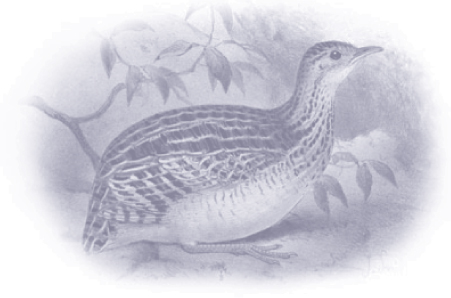
ADULT BIRD SIZE
10–10½ in (25–27 cm)
INCUBATION
17–34 days for tinamous in general, unknown for this species
CLUTCH SIZE
3–5 eggs
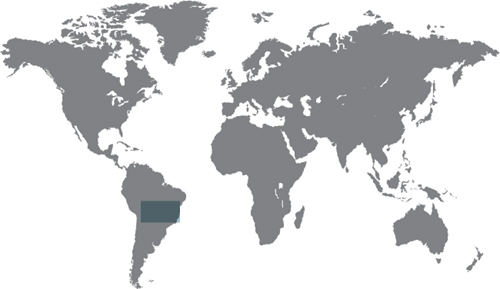
|
ORDER |
Tinamiformes |
|
FAMILY |
Tinamidae |
|
BREEDING RANGE |
Inland South America |
|
BREEDING HABITAT |
Grassy shrubland, pasture, and savanna |
|
NEST TYPE AND PLACEMENT |
On ground, in dense vegetation, or between tree roots and buttresses |
|
CONSERVATION STATUS |
Least concern |
|
COLLECTION NO. |
FMNH 2471 |
A white-washed underbelly and bright yellow legs are characteristic of both sexes of the White-bellied Nothura but because of its generally cryptic upper plumage and ground-dwelling lifestyle, it is often called a ‘quail’ in local languages. This tinamou species becomes distinctive during the mating season when the male calls to attract the females, or when it is foraging for seeds and fruits, frequently crossing dirt roads cutting across pastures and grassy fields. Up to four different females may lay in the same nest, but only the male takes care of the eggs and the young.
The White-bellied Nothura has a disjunct distribution, with separate populations breeding in eastern Brazil and also in Bolivia and Paraguay. Where it occurs, it is known to be an elusive and secretive bird; when approached by predators or people, it often crouches rather than flying off. When immediately threatened, it may hide in burrows made by other animals, including armadillos.
The egg of the White-bellied Nothura is rich chocolate brown in background color and immaculate, and it measures 1¾ x 1¼ in (43 x 31 mm) in size.


Clutch
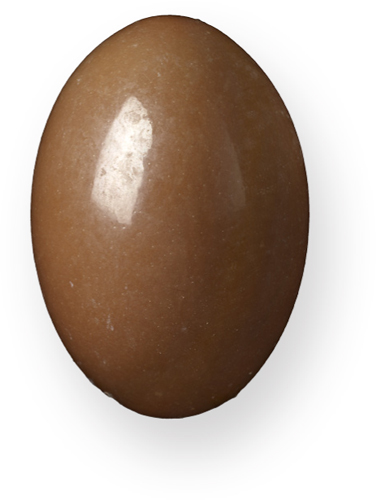
TINAMIFORMES
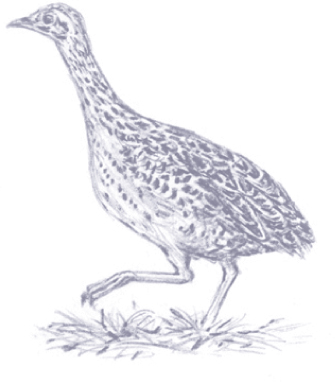
ADULT BIRD SIZE
9–10 in (23–26 cm)
INCUBATION
34 days
CLUTCH SIZE
4–6 eggs
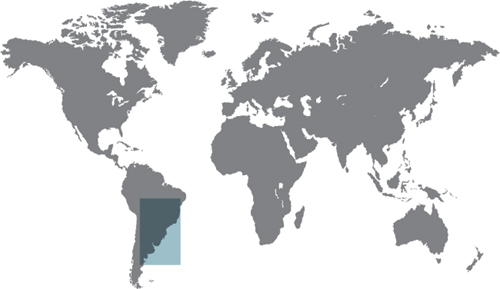
|
ORDER |
Tinamiformes |
|
FAMILY |
Tinamidae |
|
BREEDING RANGE |
Southeastern South America |
|
BREEDING HABITAT |
Grassland, farmland, dry brushland |
|
NEST TYPE AND PLACEMENT |
Ground scrape in dense bush |
|
CONSERVATION STATUS |
Least concern |
|
COLLECTION NO. |
FMNH 2201 |
In South America, tinamous are a popular gamebird, hunted for their meat throughout the continent. The Spotted Nothura is no exception, but unlike some of the other tinamou species, in most of its range strict seasonal bans and other hunting regulations assure that its populations are not exploited and remain stable. This is because the natural history of the species is such that just a few months of a hunting ban are sufficient for reproduction to begin rapidly and populations to grow in size.
Females of this species grow extremely fast and become sexually mature at as early as two to three months of age, after which they are able to lay four to six clutches of eggs per year. By contrast, the male takes longer to mature, and also needs more time than a female to become ready to breed after each attempt.
The egg of the Spotted Nothura is rich maroon to chocolate brown in background color, free of speckles with a gloss like porcelain. It measures 1⅝ x 1⅛ in (40 x 29 mm) in size. The male alone incubates the eggs and attends the highly mobile, precocial chicks.
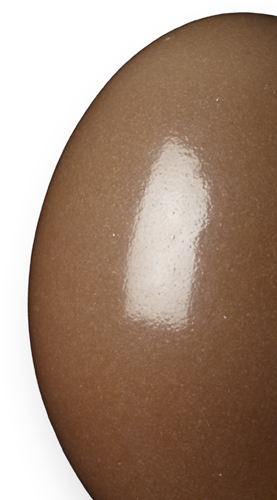

Clutch

TINAMIFORMES
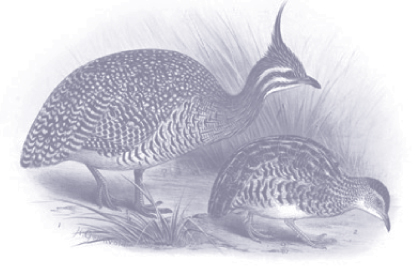
ADULT BIRD SIZE
15–16 in (38–41 cm)
INCUBATION
20–21 days
CLUTCH SIZE
5–6 eggs

|
ORDER |
Tinamiformes |
|
FAMILY |
Tinamidae |
|
BREEDING RANGE |
Southern South America |
|
BREEDING HABITAT |
Dry shrubland and farmland |
|
NEST TYPE AND PLACEMENT |
Scrape in the ground, lined with some vegetation, near low bushes |
|
CONSERVATION STATUS |
Least concern |
|
COLLECTION NO. |
FMNH 2151 |
The Elegant Crested-Tinamou is a predominantly terrestrial bird, preferring to crouch tightly to the ground when threatened, with its neck and crest erected, rather than taking flight. After the female has laid the eggs, she quickly abandons them, leaving all parental duties to the male, while she seeks another male’s nest to lay in. The bright eggs are well hidden under the cryptic plumage of the male, and the nest is located in dense vegetation. However, if a nest is lost due to predation, a female will return to the previous male and produce a replacement clutch to avoid a total reproductive failure for that breeding season.
This is a highly social species, and roosts in flocks numbering 50 to 100 individuals in the non-breeding season. During the day, however, the birds break into smaller groups to forage. Breeders become territorial, with the males using a loud, sad, whistlelike voice to demarcate their territorial boundaries.
The egg of the Elegant Crested-Tinamou is glossy emerald green in background color, and clear of maculation, and it measures 2 x 1½ in (53 x 39 mm) in size. During decades of storage in museum collections, even if in a dry and dark place, egg colors fade and lose their original tint, as seen in this faintly lime-colored egg.
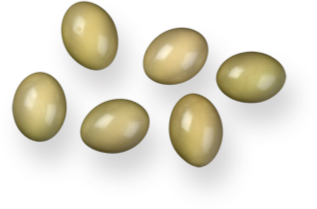
Clutch

GALLIFORMES
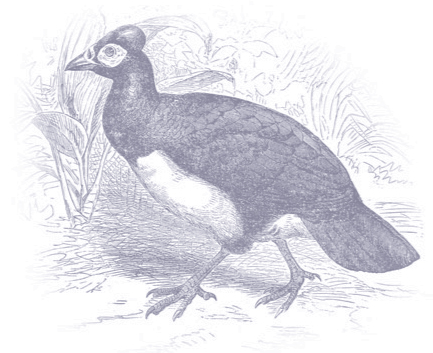
ADULT BIRD SIZE
21½–23in (55–60 cm)
INCUBATION
60 days
CLUTCH SIZE
8–12 eggs
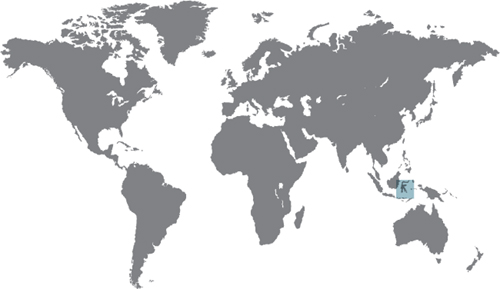
|
ORDER |
Galliformes |
|
FAMILY |
Megapodiidae |
|
BREEDING RANGE |
Sulawesi, Indonesia |
|
BREEDING HABITAT |
Sandy areas near lakes, rivers, and beaches |
|
NEST TYPE AND PLACEMENT |
Deep burrow in sand, warmed by solar or geothermal heat |
|
CONSERVATION STATUS |
Endangered |
|
COLLECTION NO. |
FMNH 2954 |
Members of the family Megapodiidae carefully select their egg-laying site, often defended as a valuable resource by a male, but the females provide no maternal care for their eggs or young. Female Maleos, for example, migrate long distances, mostly on foot, from their uphill rainforest habitats to coastal communal breeding sites. Once there, they do not build nests. Instead females lay each egg at the end of a long tunnel dug into soft sand. There, over the course of two to three months, the eggs remain while they are warmed by the sun, or by geothermal heat generated by nearby volcanic activity. Upon hatching, the young Maleo is capable not only of running but also of hiding, flying, and fending for itself.
The eggs, vulnerable on their own, benefit from the presence of many other eggs laid close to one another to avoid predation by birds, snakes, and pigs. However, as suitable habitat is destroyed, the efficacy of such “safety in numbers” is greatly reduced.
The egg of the Maleo is clear and white, with a pinkish tint, and it measures 5 x 3⅛ in (130 x 79 mm) in size. It is about five times the size of a chicken egg, and is consumed locally as a delicacy.
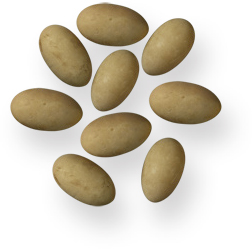
Clutch

GALLIFORMES
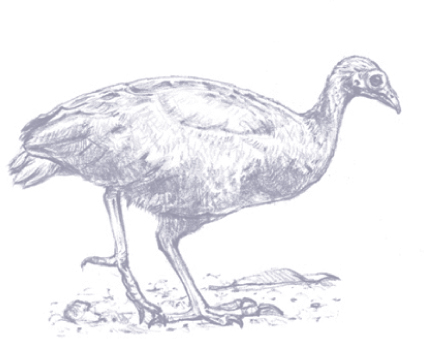
ADULT BIRD SIZE
14–15 in (36–38 cm)
INCUBATION
70 days
CLUTCH SIZE
10 eggs

|
ORDER |
Galliformes |
|
FAMILY |
Megapodiidae |
|
BREEDING RANGE |
Indonesia, Malaysia, and the Philippines |
|
BREEDING HABITAT |
Tropical lowland and montane forests |
|
NEST TYPE AND PLACEMENT |
Burrow among decaying roots of dead trees |
|
CONSERVATION STATUS |
Least concern |
|
COLLECTION NO. |
FMNH 2911 |
The Tabon or Philippine Scrubfowl, like all other megapodes, has reverted to a reptilian breeding strategy: it relies on environmental heat sources to provide warmth to induce and maintain embryonic growth and development. Eggs are laid by several females into heaps of moist sand mixed with wet leaf litter, where the eggs lie untouched. Eventually, the chick digs itself out of the heap of rotting vegetation that provides all the heat required to incubate the egg successfully.
The lack of parental brooding is paralleled by a prolonged incubation period for the Tabon Scrubfowl; this is due to the low intensity of externally generated heat sources compared to the direct transfer of parental body warmth to the egg. To withstand its long incubation period, the megapode embryo is well nourished by large and fatty yolk reserves. This makes megapode eggs highly vulnerable to ground-dwelling predators, for whom the large, yolk-rich eggs are easy prey.
The egg of the Tabon Scrubfowl is creamy to pale pink in background color, spotless, elongated in shape, and 3½ x 2 in (90 x 53 mm) in size. Unlike those of all other birds, megapode eggs are not rotated on a daily basis, and yet the embryo matures and hatches successfully.

Clutch

GALLIFORMES
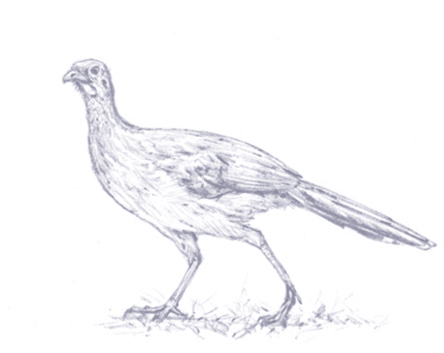
ADULT BIRD SIZE
21½–22 in (55–56 cm)
INCUBATION
21–28 days
CLUTCH SIZE
2–4 eggs
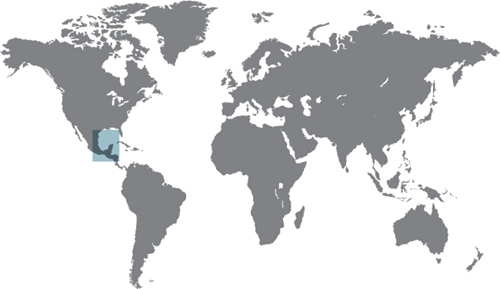
|
ORDER |
Galliformes |
|
FAMILY |
Cracidae |
|
BREEDING RANGE |
Mexico, south Texas, Central America |
|
BREEDING HABITAT |
Thickets and dense, semi-arid scrubland |
|
NEST TYPE AND PLACEMENT |
Shallow saucer of twigs and plant fibers, lined with moss and leaves, on tree branches |
|
CONSERVATION STATUS |
Least concern |
|
COLLECTION NO. |
FMNH 6020 |
While feeding, these birds move around in loose, often noisy flocks of four to six individuals. In contrast, nesting and parenting are strictly a female-only affair; males are promiscuous and do not assist the females. The female alone builds the flimsy nest, incubates the eggs, and leads the chicks away from the nest after hatching, toward safety and feeding sites. The nest is arboreal, and the chicks follow the female on their own feet by climbing and clinging to tree branches.
The Plain Chachalaca is the only member of the family Cracidae that reaches the United States in its distribution. Its Texan nickname, the tree pheasant, aptly describes the fowl-like aspects of both its appearance and its habit of roosting in trees at night, but also its non-chickenlike habit of spending most of the daytime in the tree canopy, walking, gliding, and feeding among thick and thin branches alike.
The egg of the Plain Chachalaca is cream white in background color, clear of spots, and measures 2⅓ x 1⅔ in (59 x 42 mm) in size. The texture of the eggshell is unusually rough, compared to most other, smoother fowl eggs.
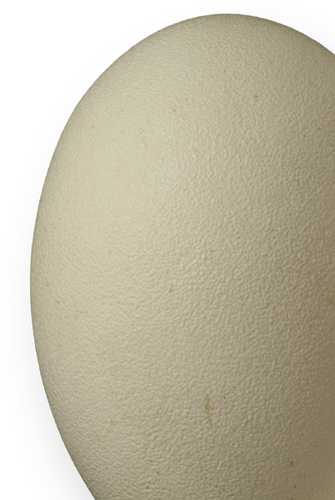
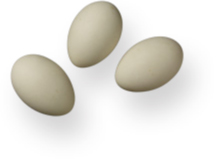
Clutch

GALLIFORMES
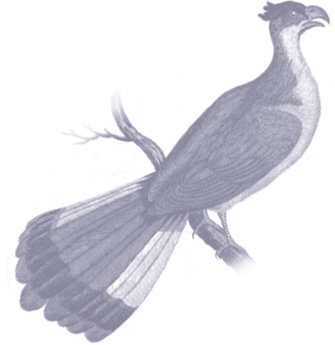
ADULT BIRD SIZE
33½–37½ in (85–95 cm)
INCUBATION
30–32 days
CLUTCH SIZE
1–3 eggs
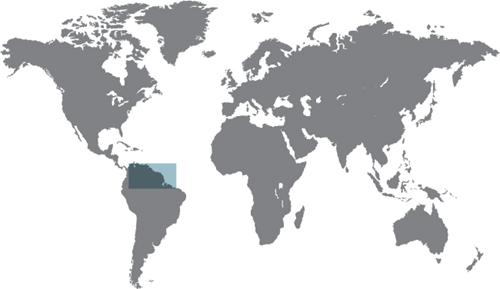
|
ORDER |
Galliformes |
|
FAMILY |
Cracidae |
|
BREEDING RANGE |
Northern South America |
|
BREEDING HABITAT |
Humid forests, thickets along rivers |
|
NEST TYPE AND PLACEMENT |
Stick nest in trees, lined with leaves and bark |
|
CONSERVATION STATUS |
Least concern |
|
COLLECTION NO. |
FMNH 2390 |
This species spends about equal time among tree branches and on the ground, in thick riparian scrub, foraging for seeds, fruits, and invertebrates. The Black Curassow is the only species in its genus, and the female and the male display the same uniformly black plumage coloration, making members of the monogamous pair bond difficult to tell apart. Similarity in plumage in this species is also complemented by shared parental duties when it comes to leading the young to food and protecting them from predators. Only the female incubates the eggs, but both parents provision the chicks, both before and after they leave the nest within days of hatching.
Curassows, as well as guans and chachalacas, are popular gamebirds, and are frequently hunted by native peoples for sustenance, especially in the Amazon. Ongoing hunting pressure on these large birds has led to increasing concern about future population trends for the species.
The egg of the Black Curassow is buff to tan in background color, with dark brown maculation, and measures 3 x 2¼ in (78 x 57 mm) in size. Female curassows are wary and will stop laying a second egg in the nest if the first egg goes missing.

Clutch
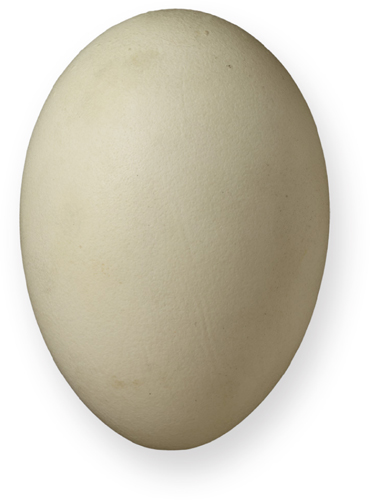
GALLIFORMES
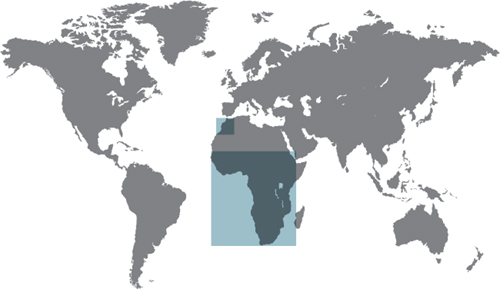
ADULT BIRD SIZE
21–23 in (53–58 cm)
INCUBATION
26–28 days
CLUTCH SIZE
8–15 eggs

|
ORDER |
Galliformes |
|
FAMILY |
Numididae |
|
BREEDING RANGE |
Sub-Saharan Africa, introduced to the West Indies, Brazil, Australia, and France |
|
BREEDING HABITAT |
Low shrubs and trees, open savanna, and farmland |
|
NEST TYPE AND PLACEMENT |
Scraped bare nest on ground |
|
CONSERVATION STATUS |
Least concern |
|
COLLECTION NO. |
FMNH 14770 |
During the breeding season, these otherwise flocking fowl become aggressive, with the males frequently engaging in physical fights with each other that lead to bloody cuts and scars. Only the females scrape their nest and incubate the eggs. Laying one egg per day they begin incubation only once all the eggs are laid in the well-hidden nest. Once the young hatch, the females often return to their flock, bringing along the precocial and mobile young with them.
An ancestor of domesticated guineafowl, this species is both colorful and sociable in its native and introduced ranges. In recent years, Helmeted Guineafowl have also expanded their habitat into suburban areas, switching their nightly roosts from tree branches to rooftops and high fences, successfully fighting off cats, and avoiding direct confrontation with dogs.
The egg of the Helmeted Guineafowl is buff in background color with light, small, dark brown maculation. It measures 2 x 1½ in (50 x 37 mm) in dimensions. The eggshell is so thick relative to its size that the hatchlings—called keets—end up breaking the shell into many small fragments just to work their way out of it.

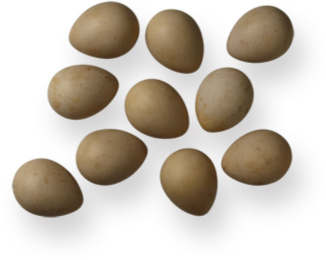
Clutch

GALLIFORMES

ADULT BIRD SIZE
10–12 in (26–31 cm)
INCUBATION
21–25 days
CLUTCH SIZE
9–10 eggs
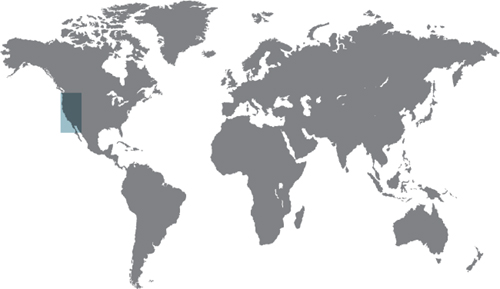
|
ORDER |
Galliformes |
|
FAMILY |
Odontophoridae |
|
BREEDING RANGE |
Western North America |
|
BREEDING HABITAT |
Dry shrubland and chaparral, up to high elevations |
|
NEST TYPE AND PLACEMENT |
Simple scrape on ground |
|
CONSERVATION STATUS |
Least concern |
|
COLLECTION NO. |
FMNH 15930 |
Mountain Quail are sociable birds, and can be found in flocks, called coveys. During the breeding season, however, pairs break off from the covey and display to each other by tossing twigs and leaves, as if gathering nesting materials, even though the nest is typically a shallow scrape in the understory with little or no lining. Once the pair bond is established, the female and the male closely cooperate in preparing to raise their young, with both sexes involved in choosing the nest site, incubating the eggs, and protecting the chicks.
Such biparental care is made possible by the development of a brood patch, a bare area of skin on the belly of both the female and the male, so they can take turns incubating the eggs. Later, when the eggs hatch, the female may leave the male to look after the first brood of young, while she lays a second clutch that she alone takes care of.
The egg of the Mountain Quail is white or pale pink in background color and immaculate, and it measures 1⅓ x 1 in (34 x 25 mm) in size. The eggs are hidden from predators in a nest concealed in vegetation, at the base of a tree or shrub stem.

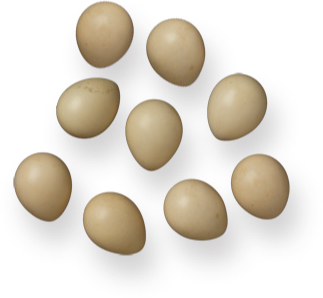
Clutch
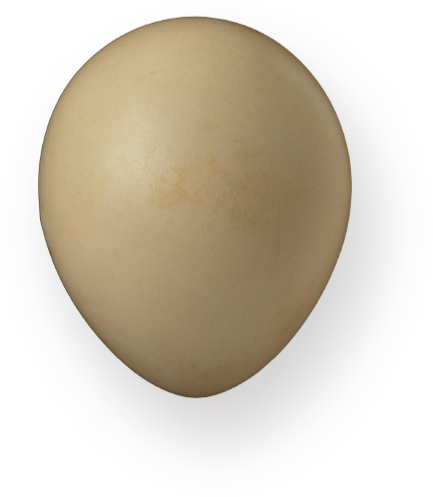
GALLIFORMES

ADULT BIRD SIZE
9½–10½ in (24–27 cm)
INCUBATION
22–23 days
CLUTCH SIZE
12–16 eggs

|
ORDER |
Galliformes |
|
FAMILY |
Odontophoridae |
|
BREEDING RANGE |
Western North America, introduced to South America and several Pacific Islands |
|
BREEDING HABITAT |
Coastal sagebrush, chaparral, and desert shrub |
|
NEST TYPE AND PLACEMENT |
Shallow depression lined with stems and grasses |
|
CONSERVATION STATUS |
Least concern |
|
COLLECTION NO. |
FMNH 9070 |
Raising young is a group affair for these quail, with broods of several different pairs amalgamated into one large group, which is looked after by all the parents. Group parenting is beneficial, because more adults means more vigilance against predators; also, more chicks means there is less chance of any one chick being picked off by a predator. However, in flocks where both California and Gambel’s Quail parents attend the young, the chicks may accidentally imprint on the wrong species, leading to mating between the two species.
The California Quail is a well-known and distinctive bird, familiar to people living in coastal California cities and suburbs, and popularized in many Hollywood movies and Disney cartoons. Outside the mating season, the species occurs in large flocks, called quail coveys.
The egg of the California Quail is white to cream in background color, has variable brown maculation, and measures 1¼ x ½ in (32 x 25 mm). Occasionally, females will lay their eggs into existing nests, typically of other quail, but some have been found even in the nest of a Wild Turkey (see here).


Clutch

GALLIFORMES

ADULT BIRD SIZE
9½–11 in (24–28 cm)
INCUBATION
23–24 days
CLUTCH SIZE
12–16 eggs
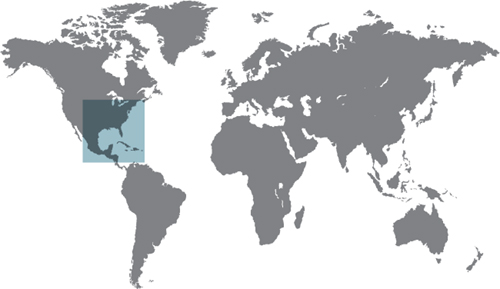
|
ORDER |
Galliformes |
|
FAMILY |
Odontophoridae |
|
BREEDING RANGE |
Eastern and central North America, Mexico, the Caribbean |
|
BREEDING HABITAT |
Grasslands |
|
NEST TYPE AND PLACEMENT |
Simple scrape in the ground |
|
CONSERVATION STATUS |
Least concern, but some subspecies are endangered |
|
COLLECTION NO. |
FMNH 9050 |
The Northern Bobwhite is polyandrous, in that up to half of the females in a population mate with and lay eggs for two or more males. Both females and males incubate the nest, but a female will often abandon her first mate in search of a second, and a third, with whom she begins new clutches. This flexible and fast-paced clutch-initiation strategy may allow the species to recover after years of heavy predation, low food availability, cold weather, and intense hunting pressure, all of which are taking their toll in many regions.
The Northern Bobwhite has over 20 different subspecies. They are connected by the relative similarity of the females’ plumage coloration across distant geographic areas, and separated by the different facial patterns of males. Despite their terrestrial and secretive habits, the distinctive call of the male (“bob white!”) advertizes the presence of this species throughout its range.
The egg of the Northern Bobwhite is white with some gloss, immaculate, and 13∕16 x 1 in (30 x 25 mm) in dimensions. If the eggs are taken by predators, the female can readily lay a second clutch.
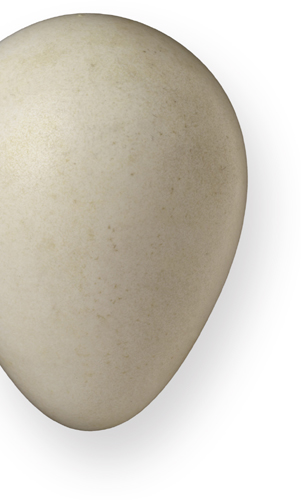

Clutch

GALLIFORMES

ADULT BIRD SIZE
8–9 in (20–23 cm)
INCUBATION
23–27 days
CLUTCH SIZE
6–16 eggs

|
ORDER |
Galliformes |
|
FAMILY |
Odontophoridae |
|
BREEDING RANGE |
Mexico and southwestern USA |
|
BREEDING HABITAT |
Open woodlands of oaks and pines |
|
NEST TYPE AND PLACEMENT |
Built-up ground nest, made of grasses and other dry vegetation under dense shrub canopy |
|
CONSERVATION STATUS |
Least concern |
|
COLLECTION NO. |
FMNH 15931 |
This small and distinctively colored New World quail maintains year-round territories. It occurs in small coveys of four to eight individuals in the non-breeding season, yet pairs become highly territorial and quite distantly spaced for such a small species in the breeding season. Before nesting commences the male calls loudly to his mate for several months. Nesting coincides with the onset of the unpredictable summer monsoon rains where the species resides.
As a ground-dwelling species, these quail rely on camouflage and immobility to remain undetected by predators. When approached too closely, they jump high and then take flight in an explosive escape response. During incubation, the male is in charge of standing guard to protect the nest while the female sits on the nest; the male only rarely incubates the eggs himself.
The egg of the Montezuma Quail is chalk white to light buff in background color, with no maculation, and it measures 1⅓ x 11∕16 in (34 x 27 mm). The white eggs become stained from the decaying nesting materials as the incubation progresses, especially in years with heavy monsoon rains.


Clutch

GALLIFORMES
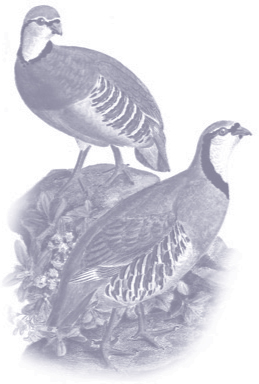
ADULT BIRD SIZE
13½–14 in (34–35 cm)
INCUBATION
24–26 days
CLUTCH SIZE
8–14 eggs
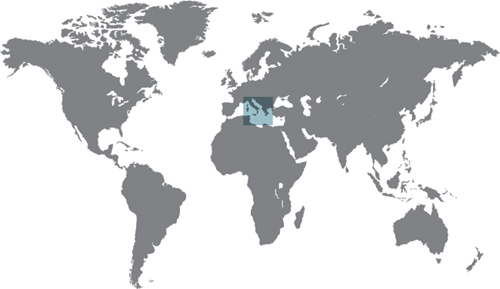
|
ORDER |
Galliformes |
|
FAMILY |
Phasianidae |
|
BREEDING RANGE |
Southeastern Europe, introduced into many other temperate regions as a gamebird |
|
BREEDING HABITAT |
Rocky slopes, and lightly wooded montane areas |
|
NEST TYPE AND PLACEMENT |
Ground scrape lined with twigs and leaves |
|
CONSERVATION STATUS |
Near threatened |
|
COLLECTION NO. |
FMNH 20894 |
These quail are monogamous, with both parents remaining near the nest throughout the incubation period and during chick rearing. The incubating bird and the eggs are hidden under ferns, branches, or overhanging rocks and cliffs. Occasionally, the female will lay a second clutch soon after the first clutch; these second nests are then attended solely by the female, while the male looks after the first one. This effectively doubles the reproductive output of the pair during a single breeding season.
The Rock Partridge is a conspicuous and distinctively colored species, which inhabits rocky and brushy high elevations in several Mediterranean countries. With climate shifts, habitat destruction, and hunting pressure, this species is continuing to decline in numbers in its native range. By contrast, throughout much of its introduced range, the species is doing quite well, having become naturalized on several other continents.
The egg of the Rock Partridge is pale cream to brown in background color with fine red maculation, and measures 1½ x 1⅓ in (40 x 34 mm).
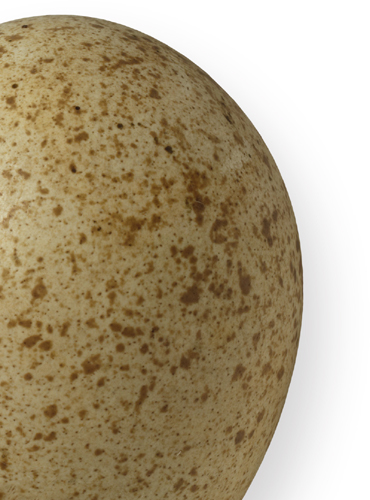
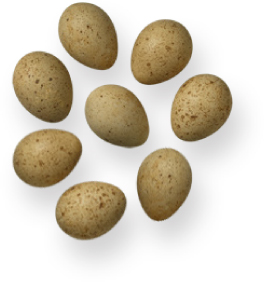
Clutch

GALLIFORMES

ADULT BIRD SIZE
13–14 in (33–36 cm)
INCUBATION
18–19 days
CLUTCH SIZE
8–12 eggs

|
ORDER |
Galliformes |
|
FAMILY |
Phasianidae |
|
BREEDING RANGE |
Central to western Asia |
|
BREEDING HABITAT |
Grasslands and scrub, typically near water |
|
NEST TYPE AND PLACEMENT |
Ground scrape, lined with leaves and twigs |
|
CONSERVATION STATUS |
Least concern |
|
COLLECTION NO. |
FMNH 21445 |
The male Black Francolin is both loud in voice and conspicuous in plumage coloration and pattern, whereas the quieter female is drabber and cryptic in appearance. Moving and feeding in flocks during the non-breeding season, with the onset of mating these birds break away into pairs, and the males aggressively defend their territories from nearby competitors.
The morphological and behavioral sex differences well complement the specific reproductive roles of the pair: the male uses his voice and displays to attract a female for pair bonding, providing her with insects as nuptial gifts. Once the pair bond is settled, the female quietly takes charge of nesting and incubating. The nest and the eggs are well hidden from view by dense overhanging vegetation. Both parents provide warmth or shade, and protection from danger for the precocial young.
The egg of the Black Francolin is olive to pale buff in background color, round in shape with small white spots near the pole, and 1¾ x 1½ in (46 x 37 mm) in size.

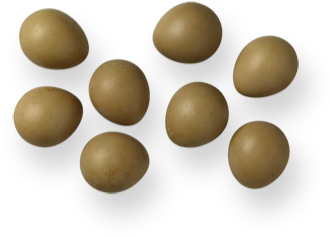
Clutch
